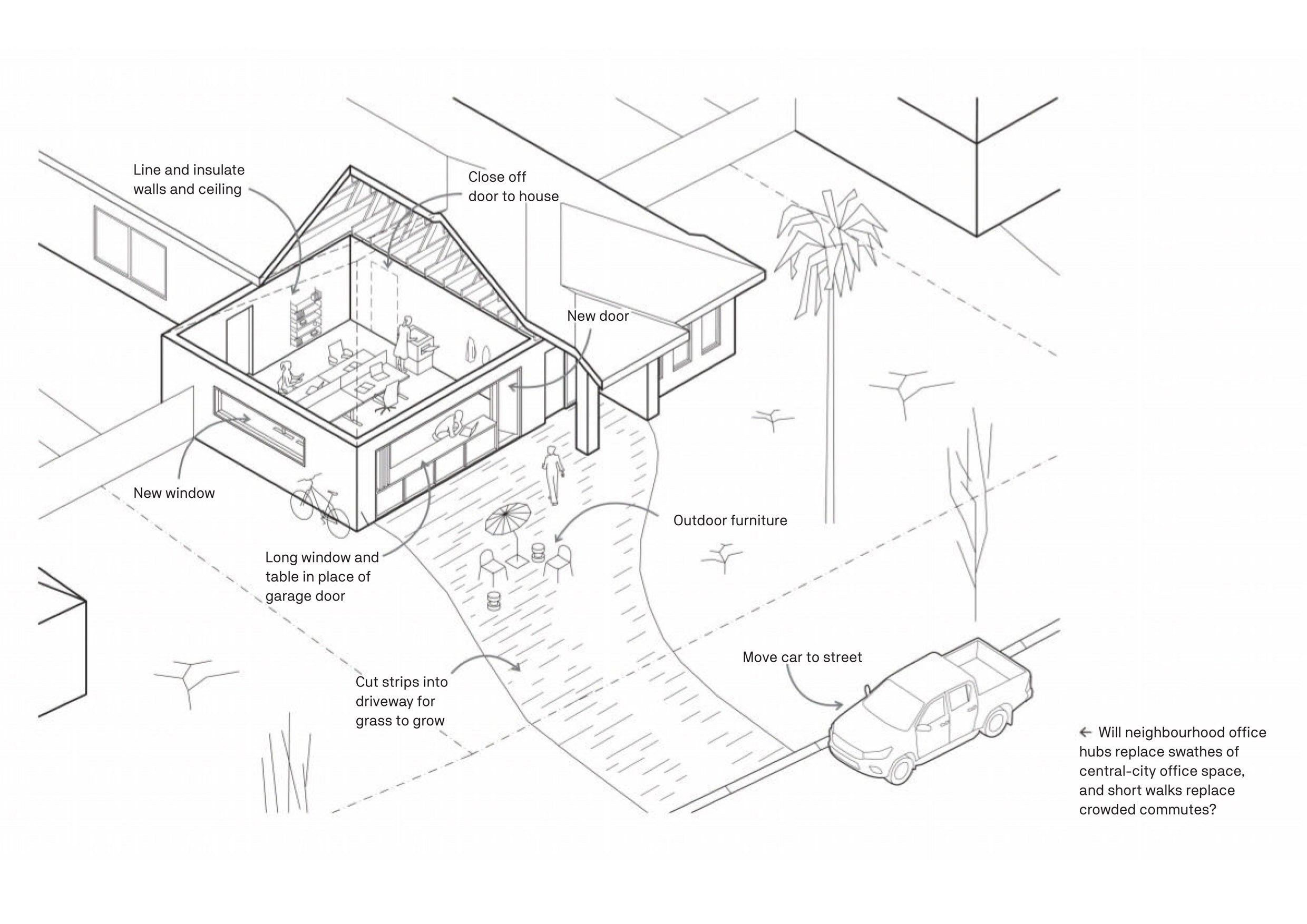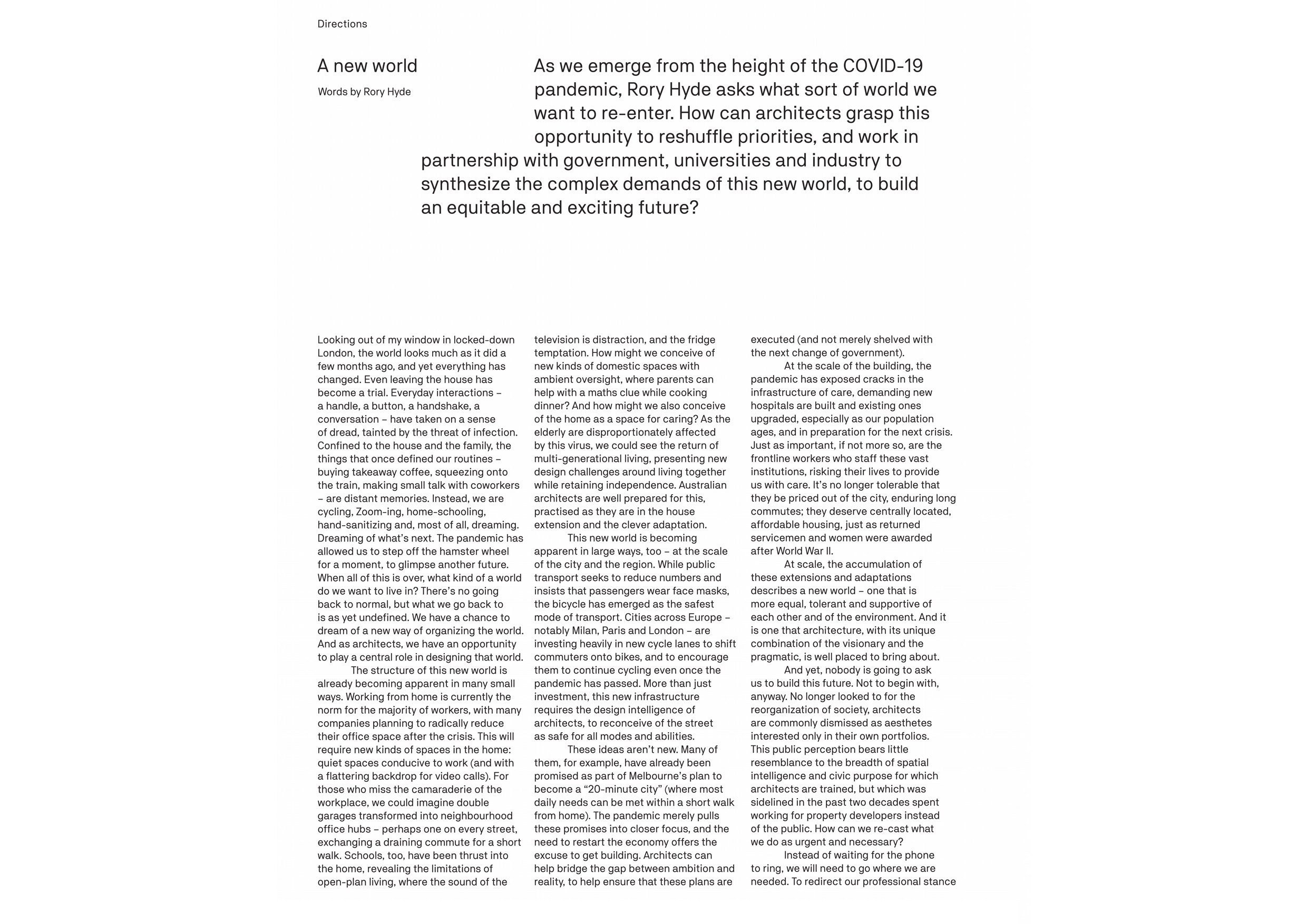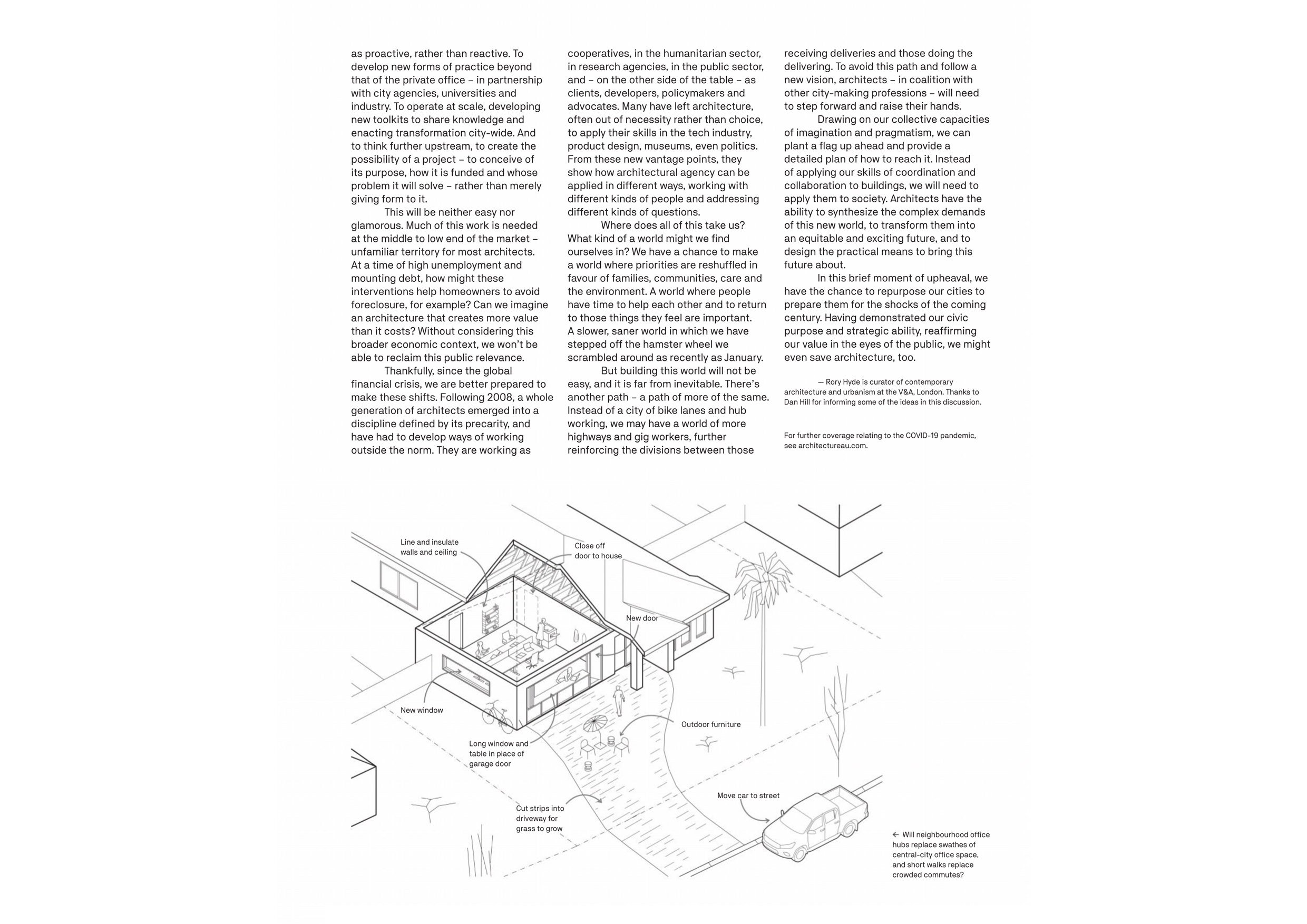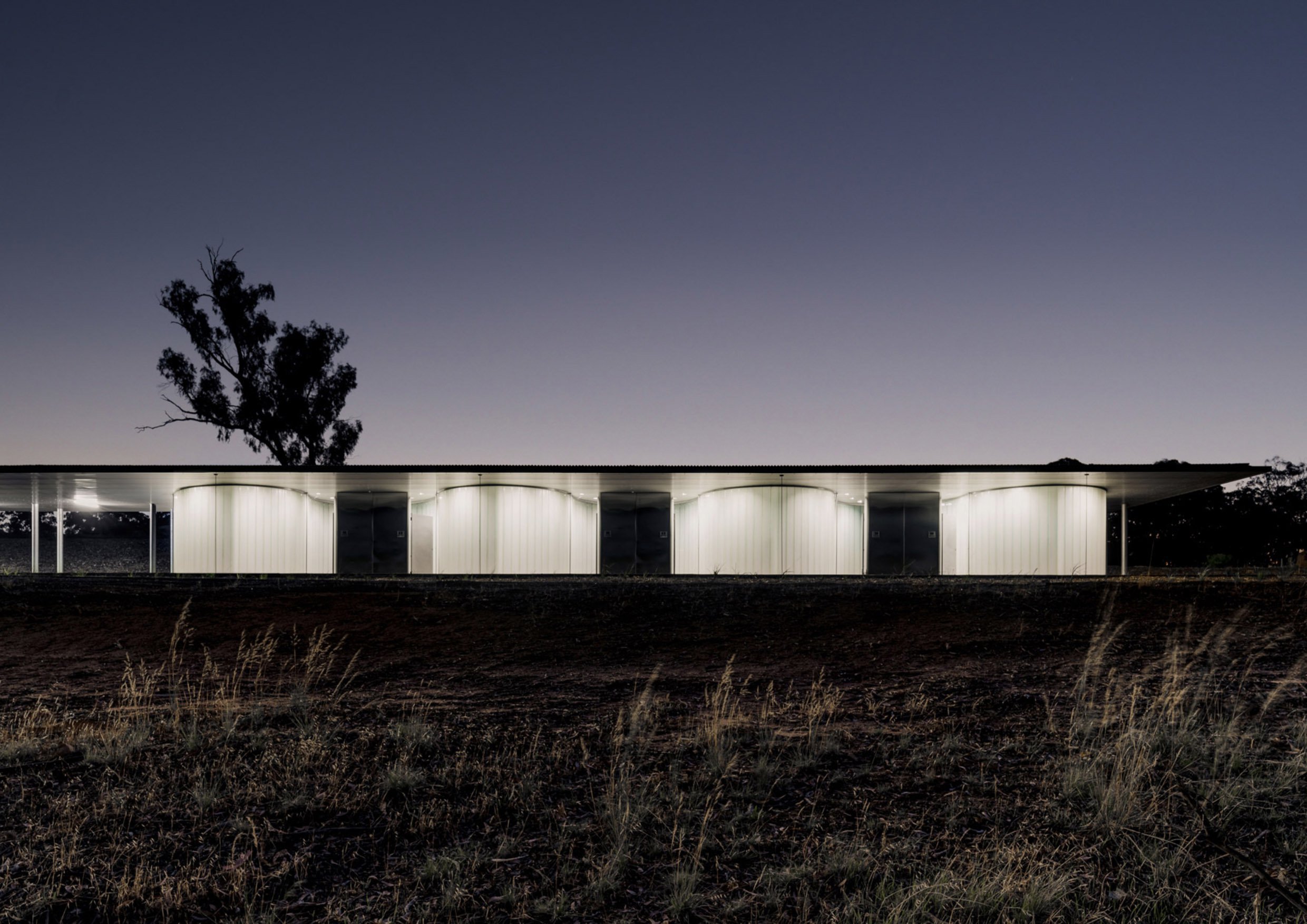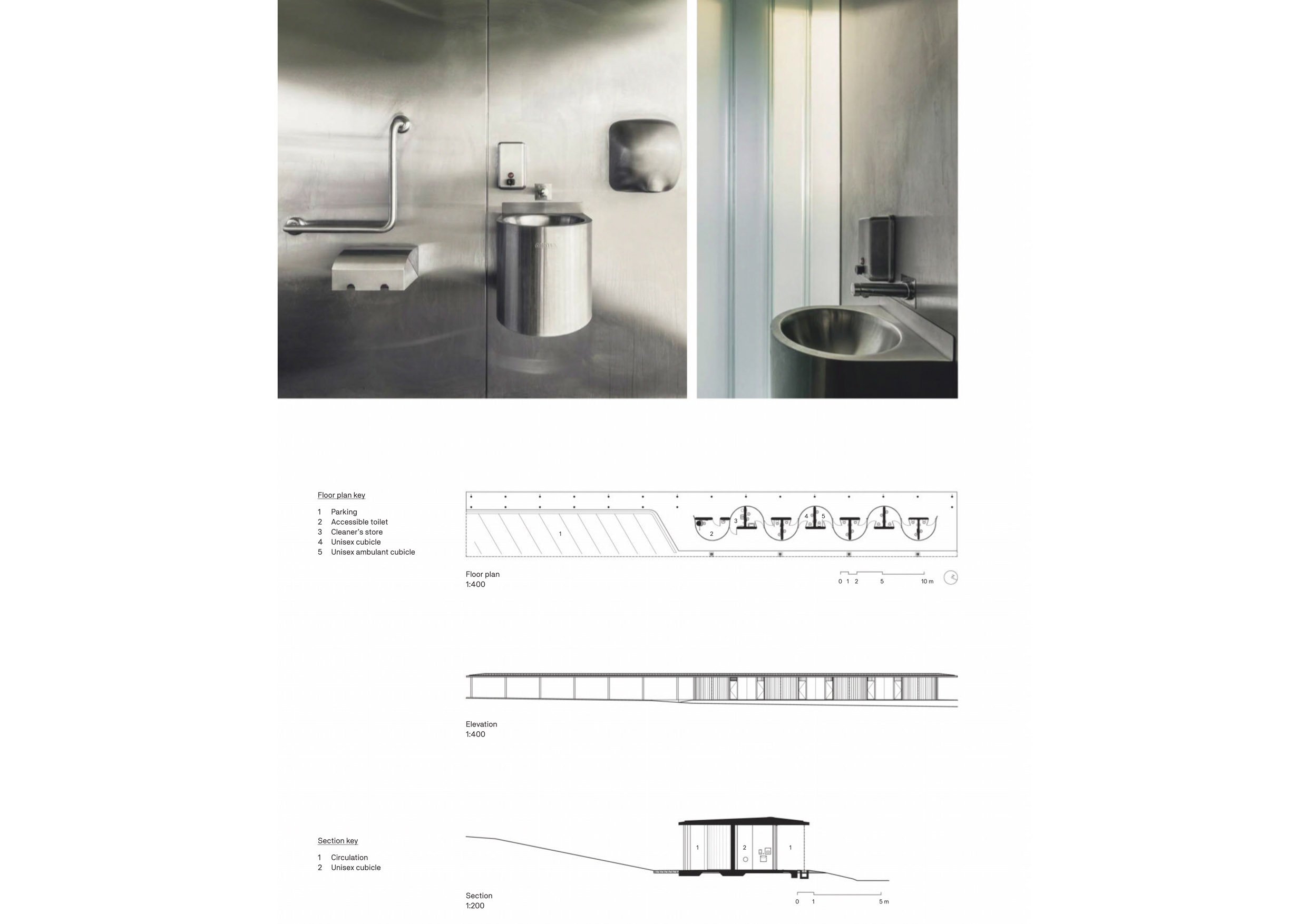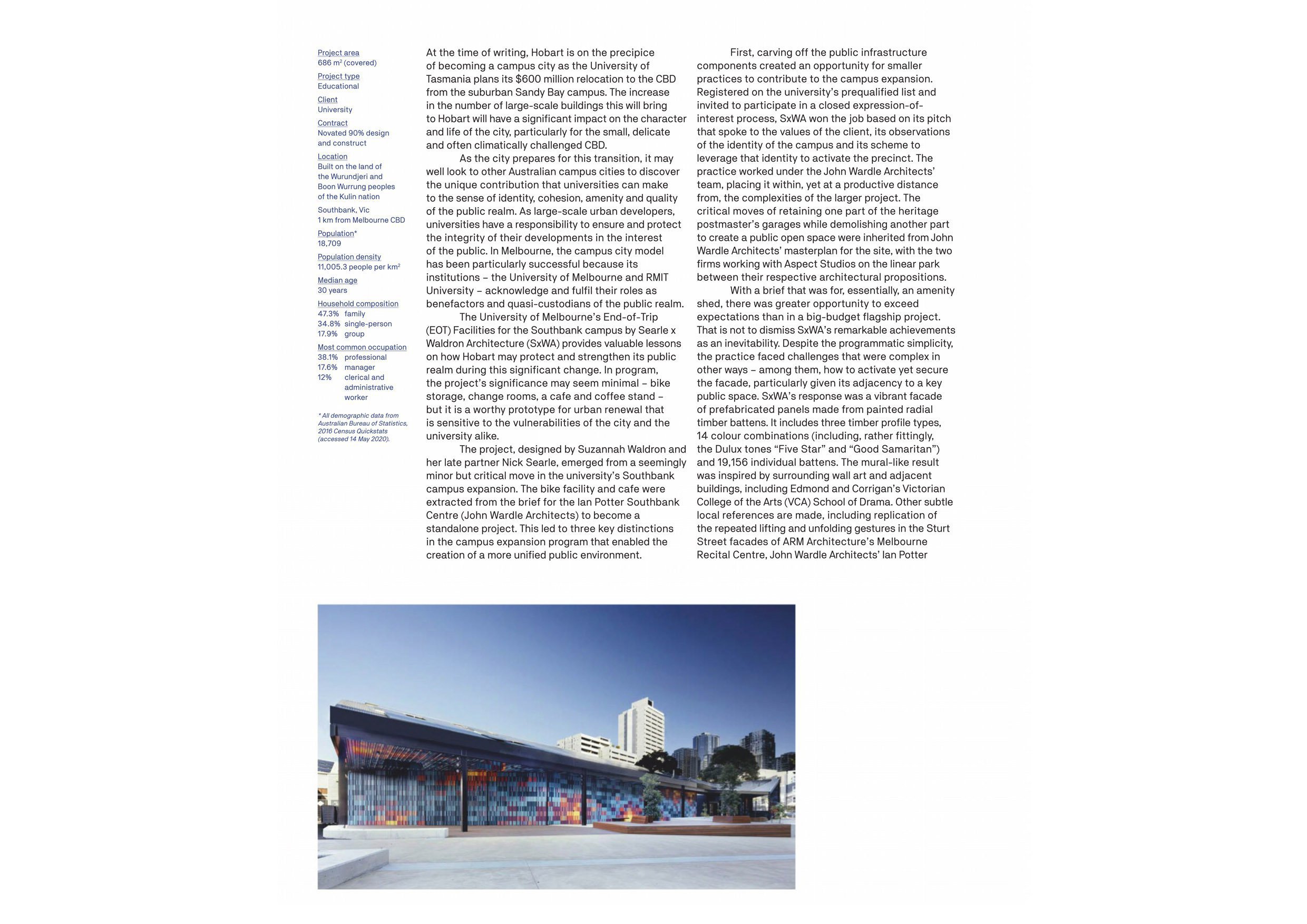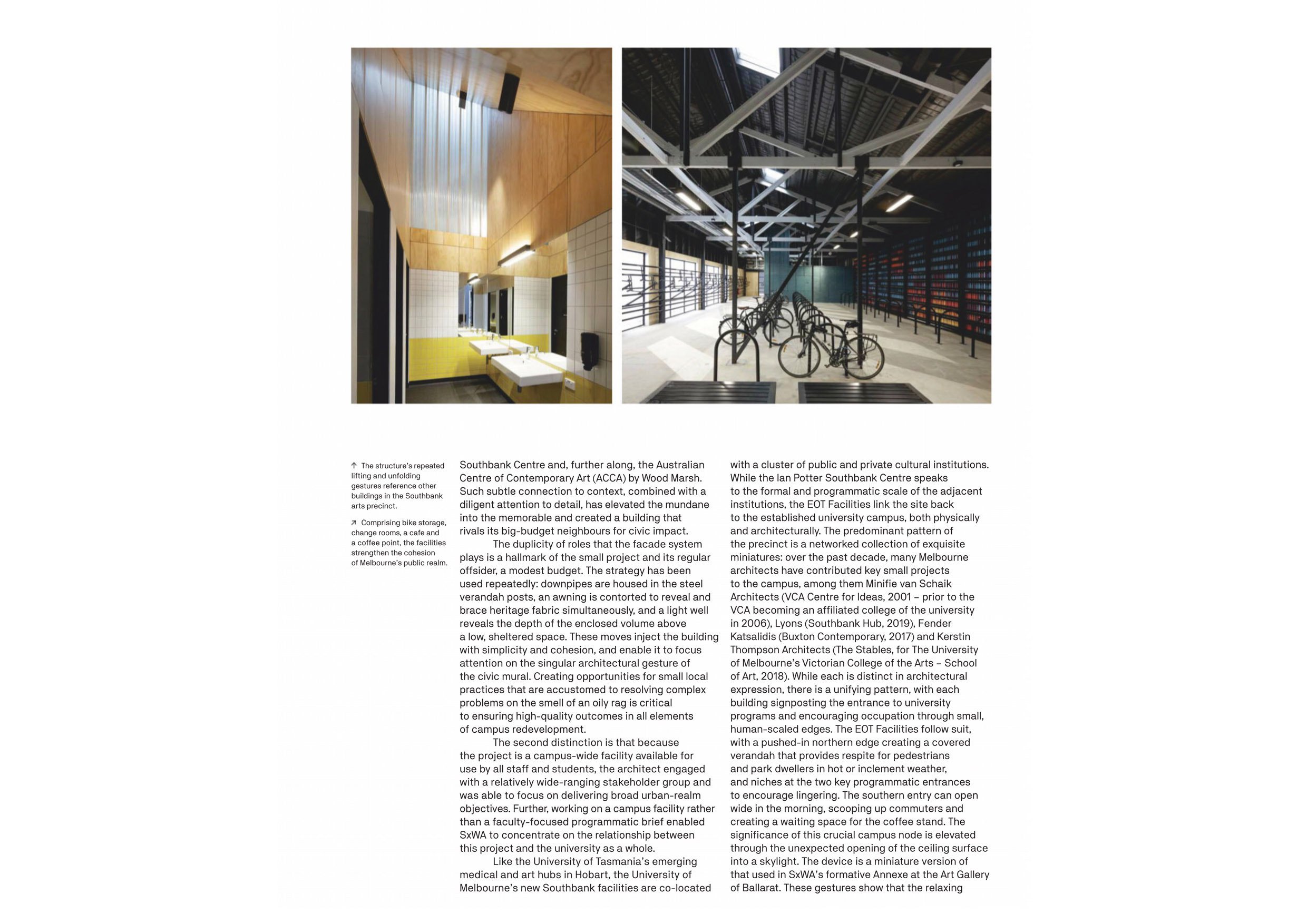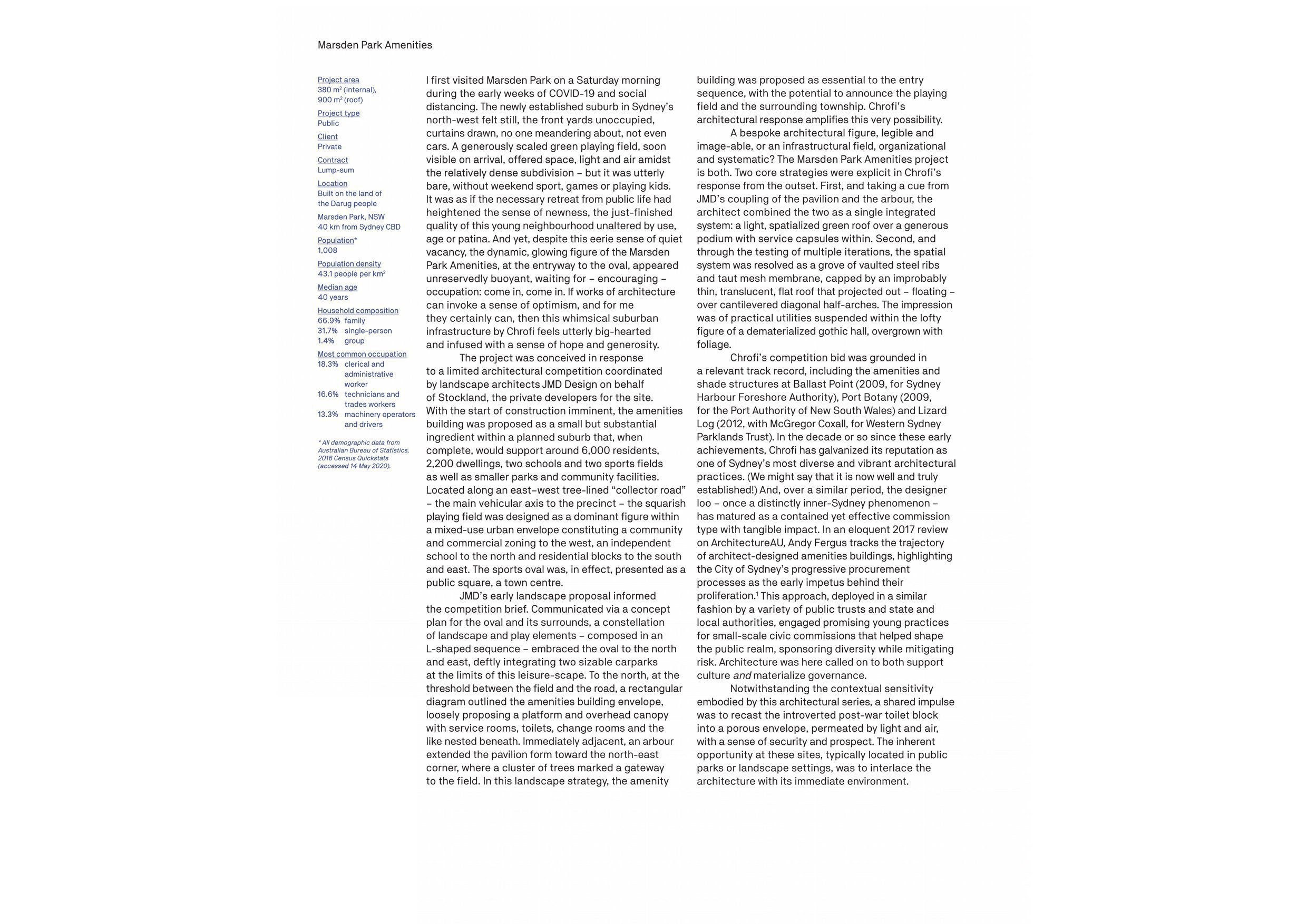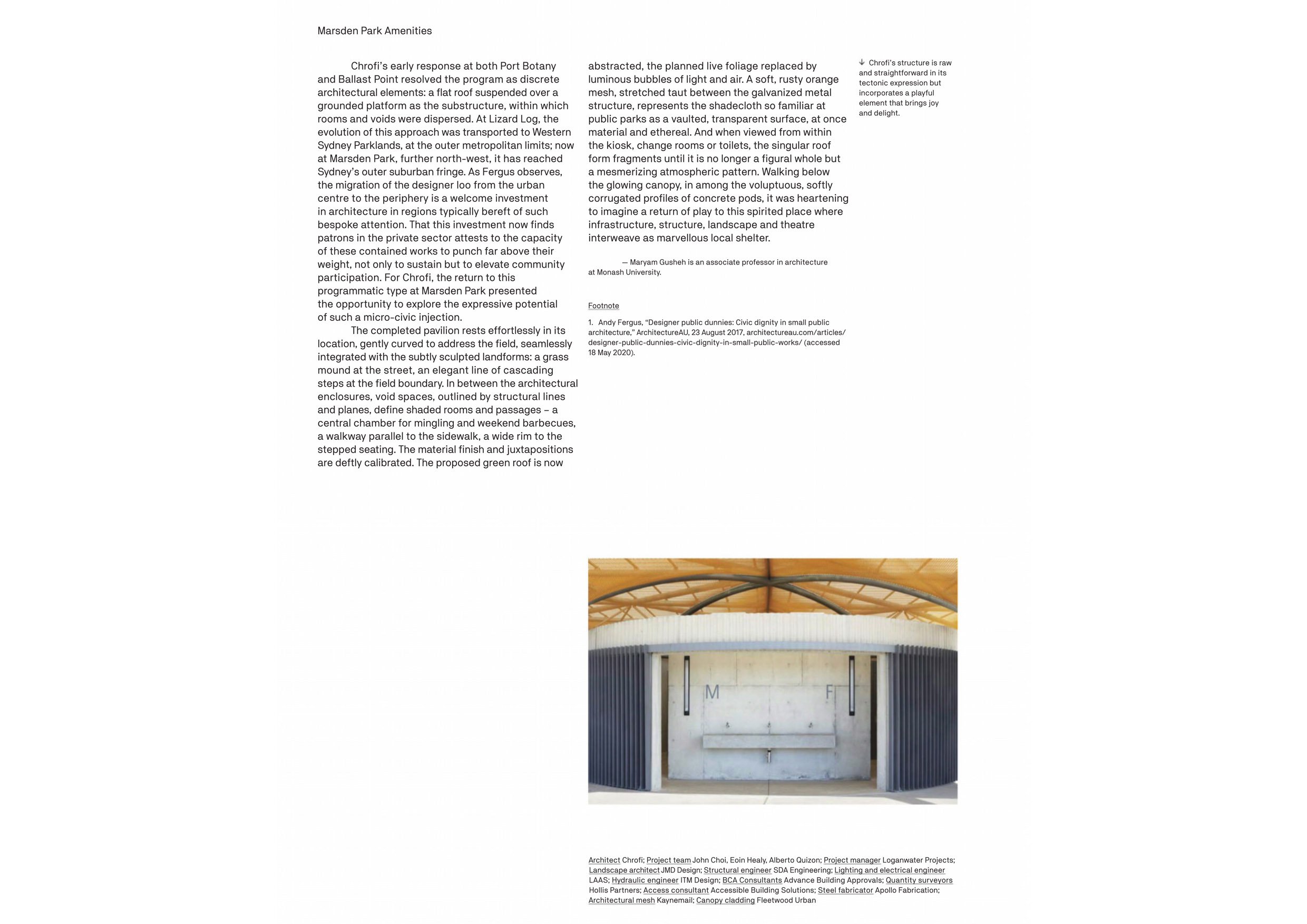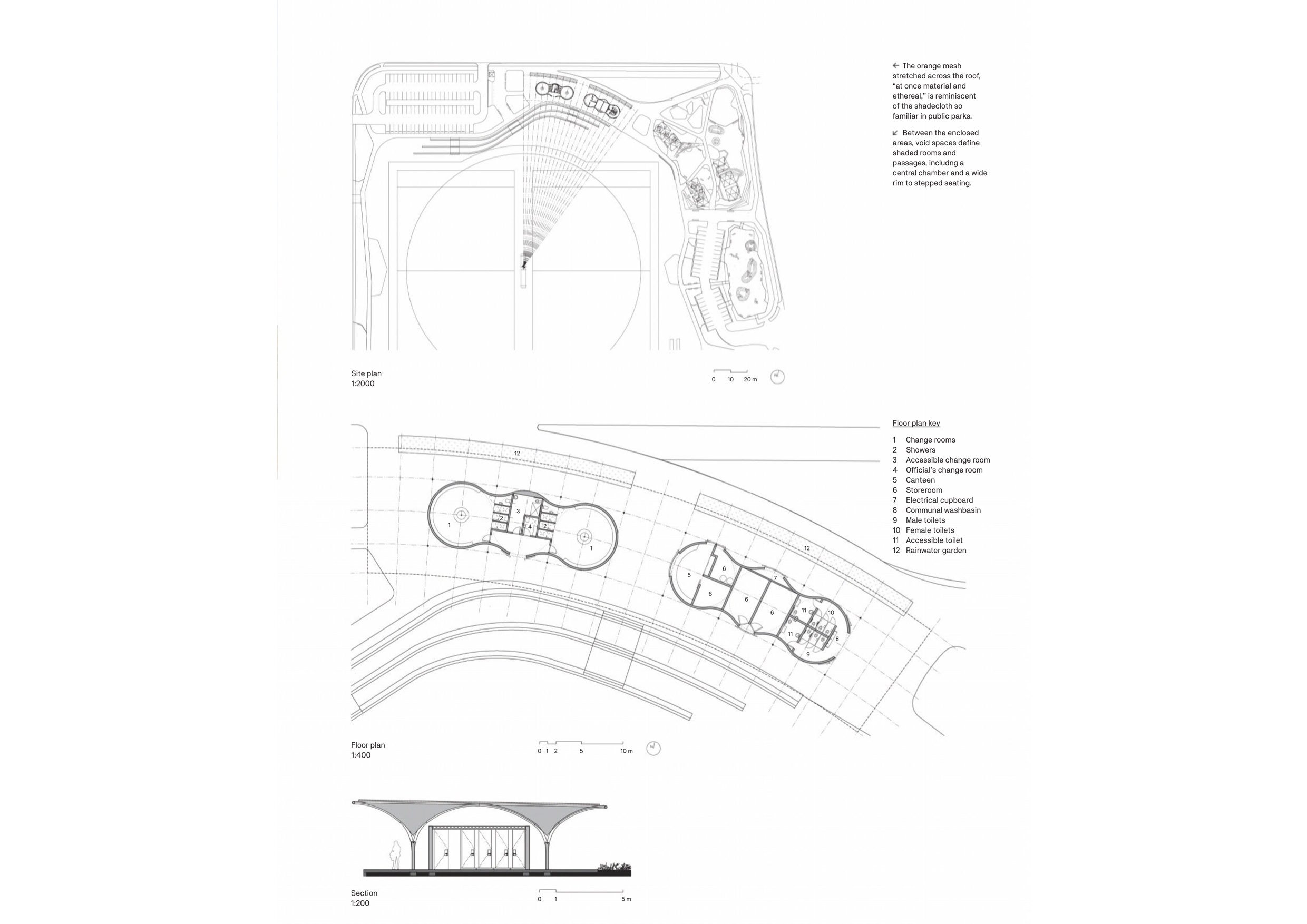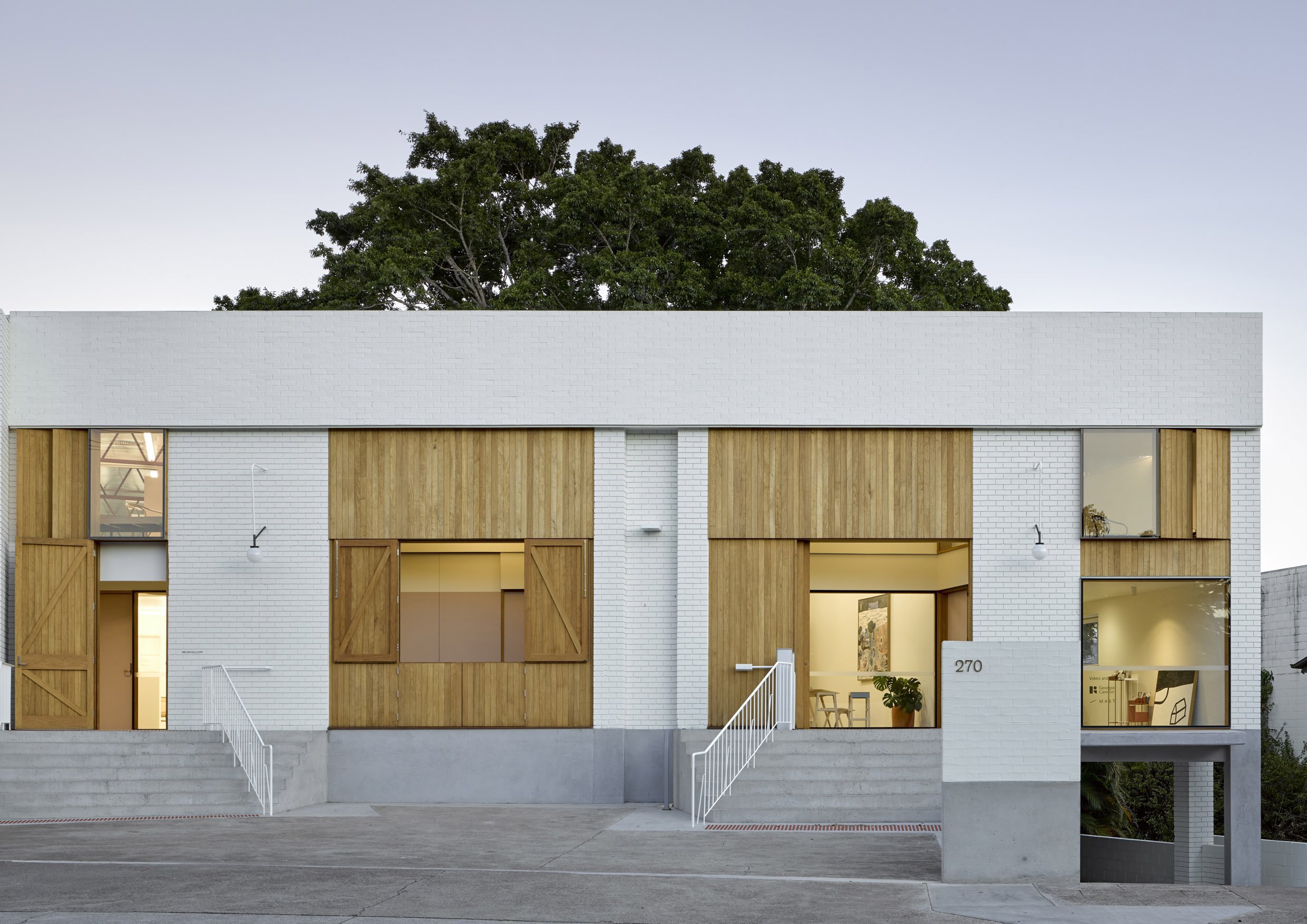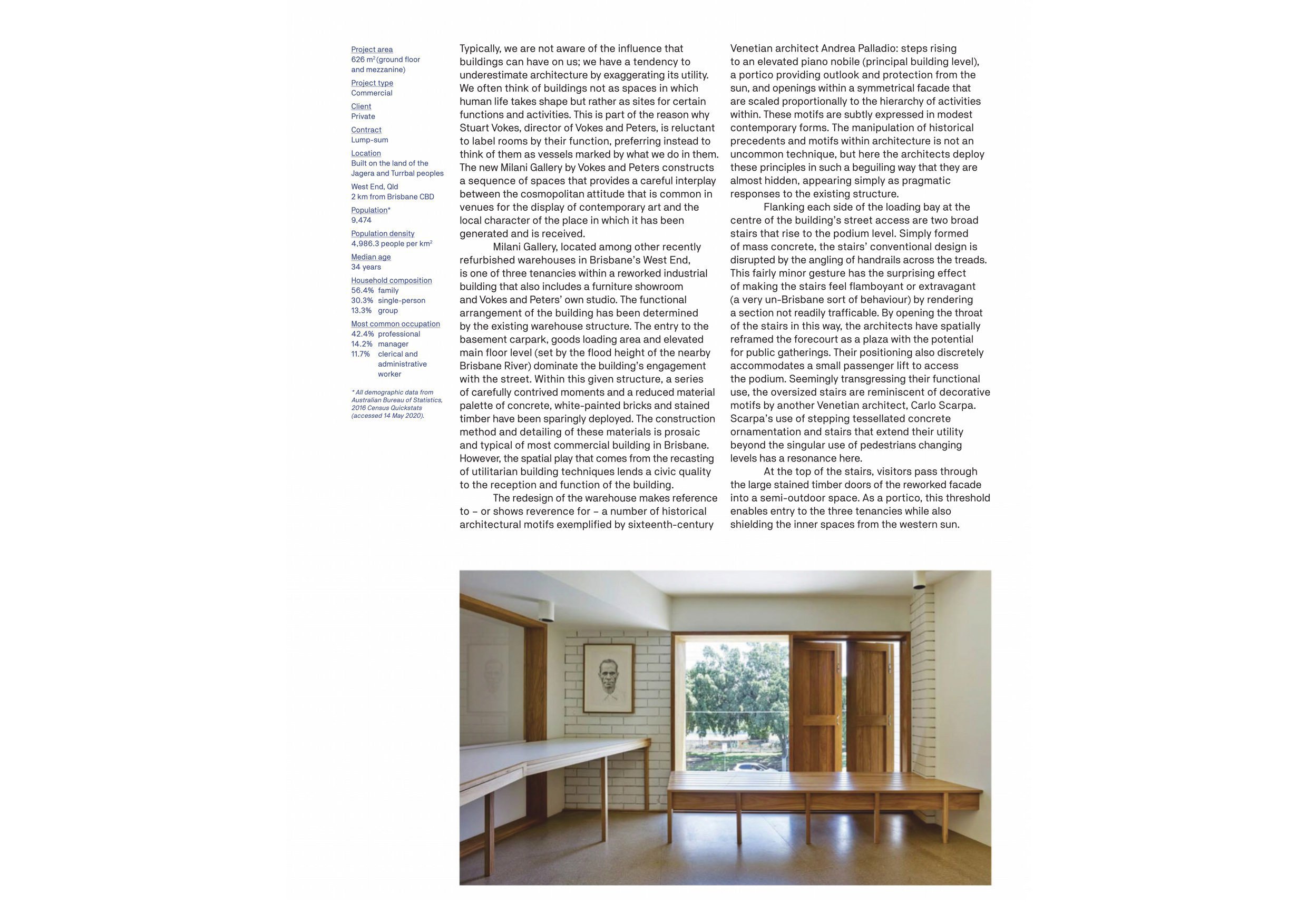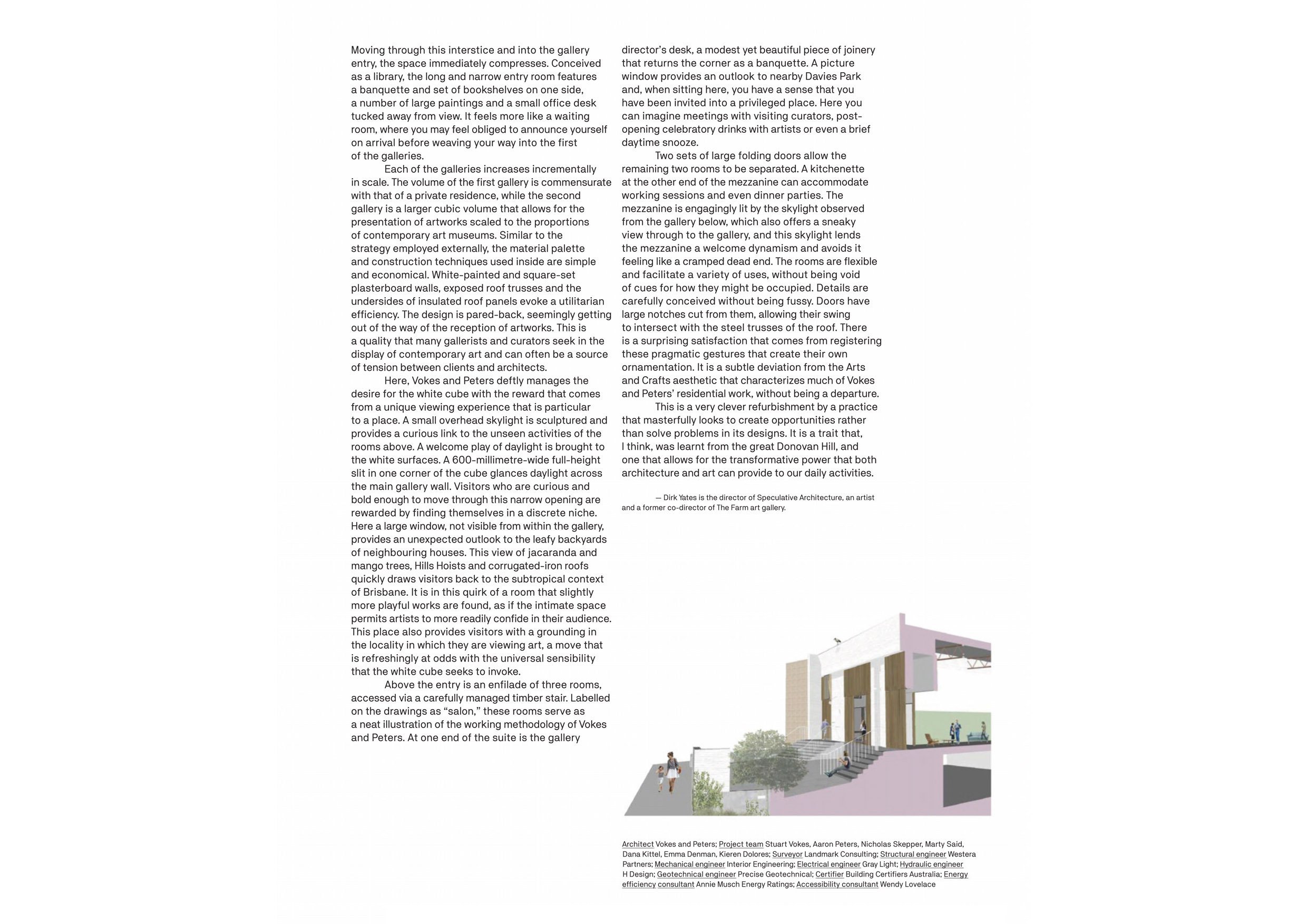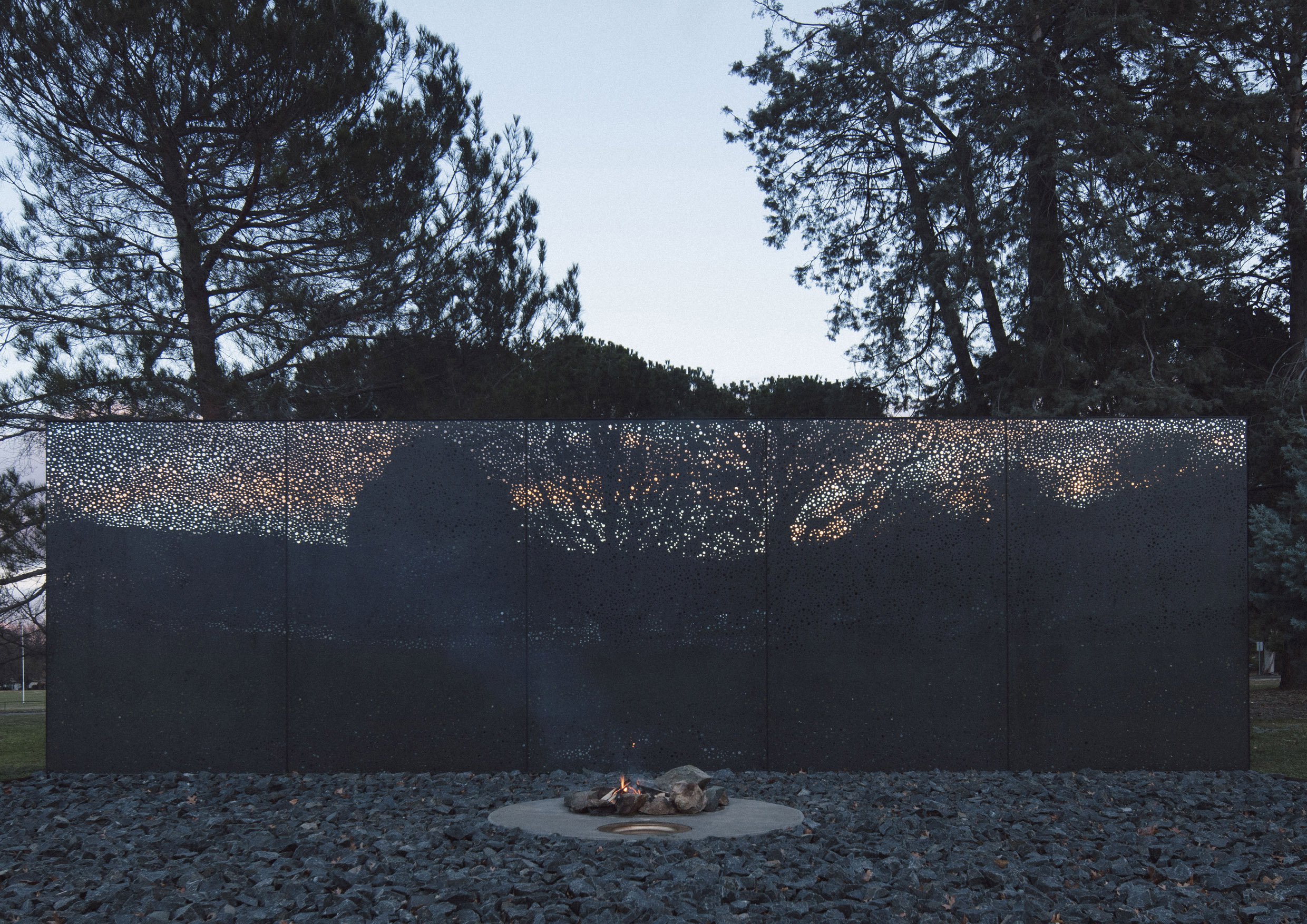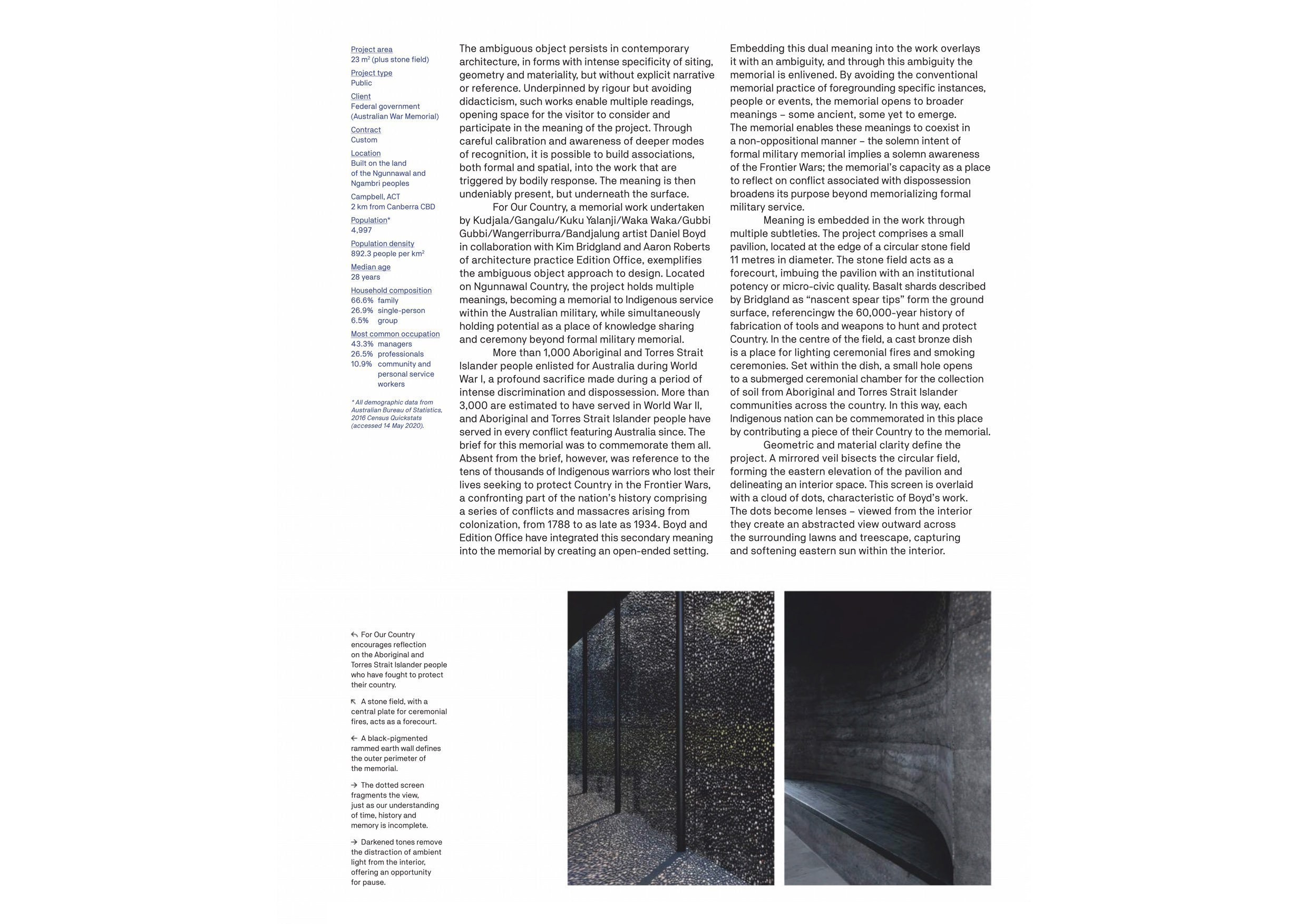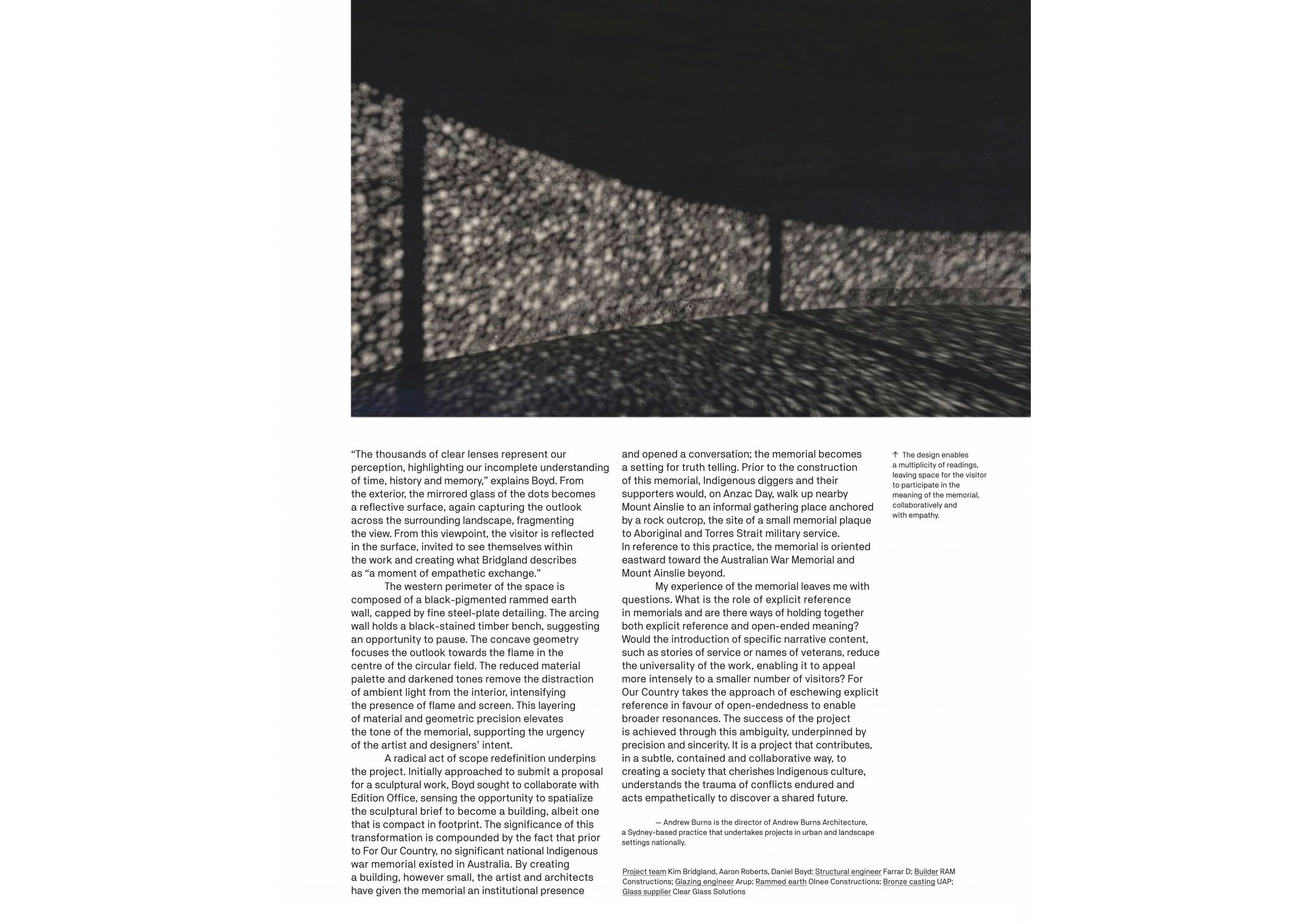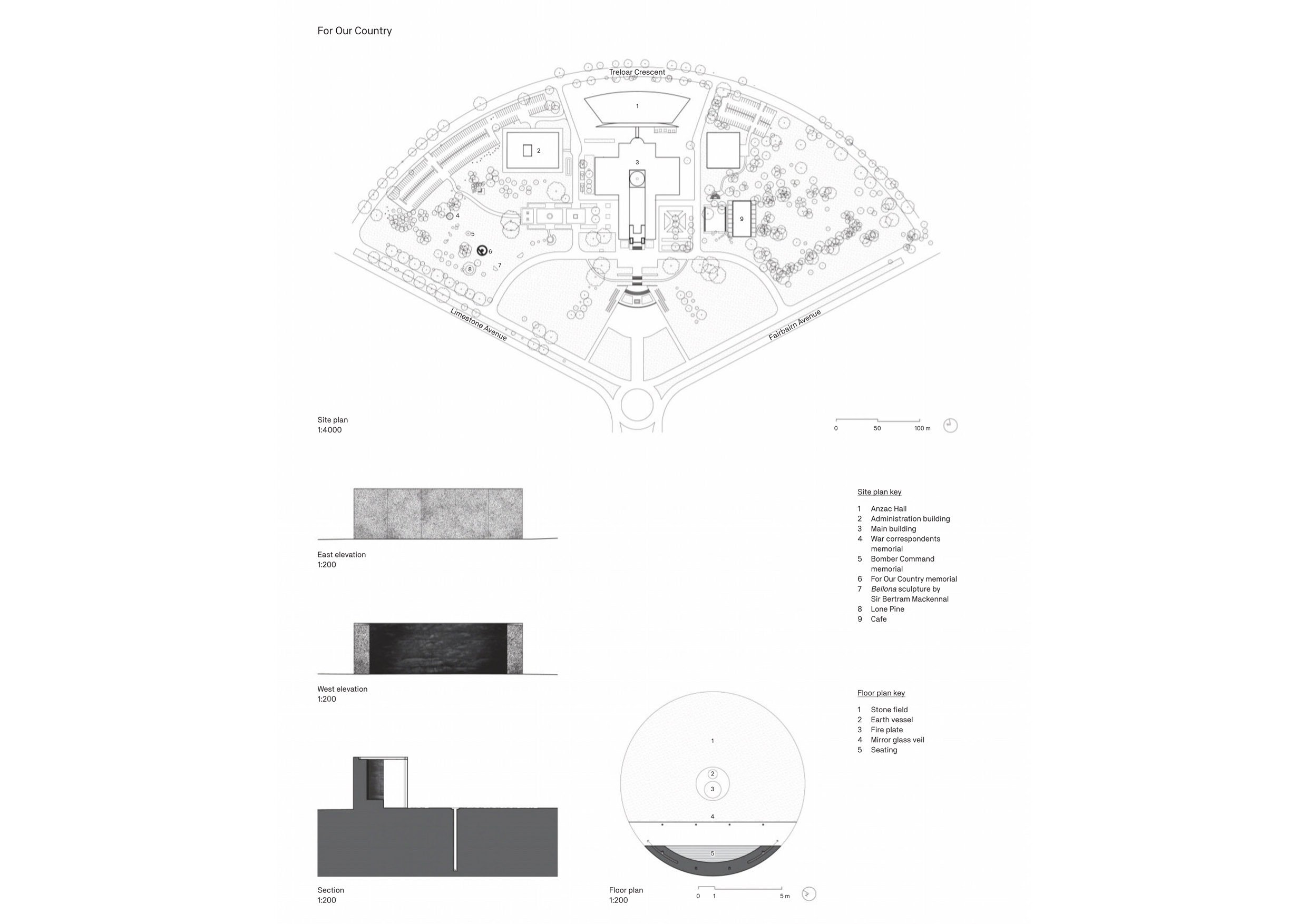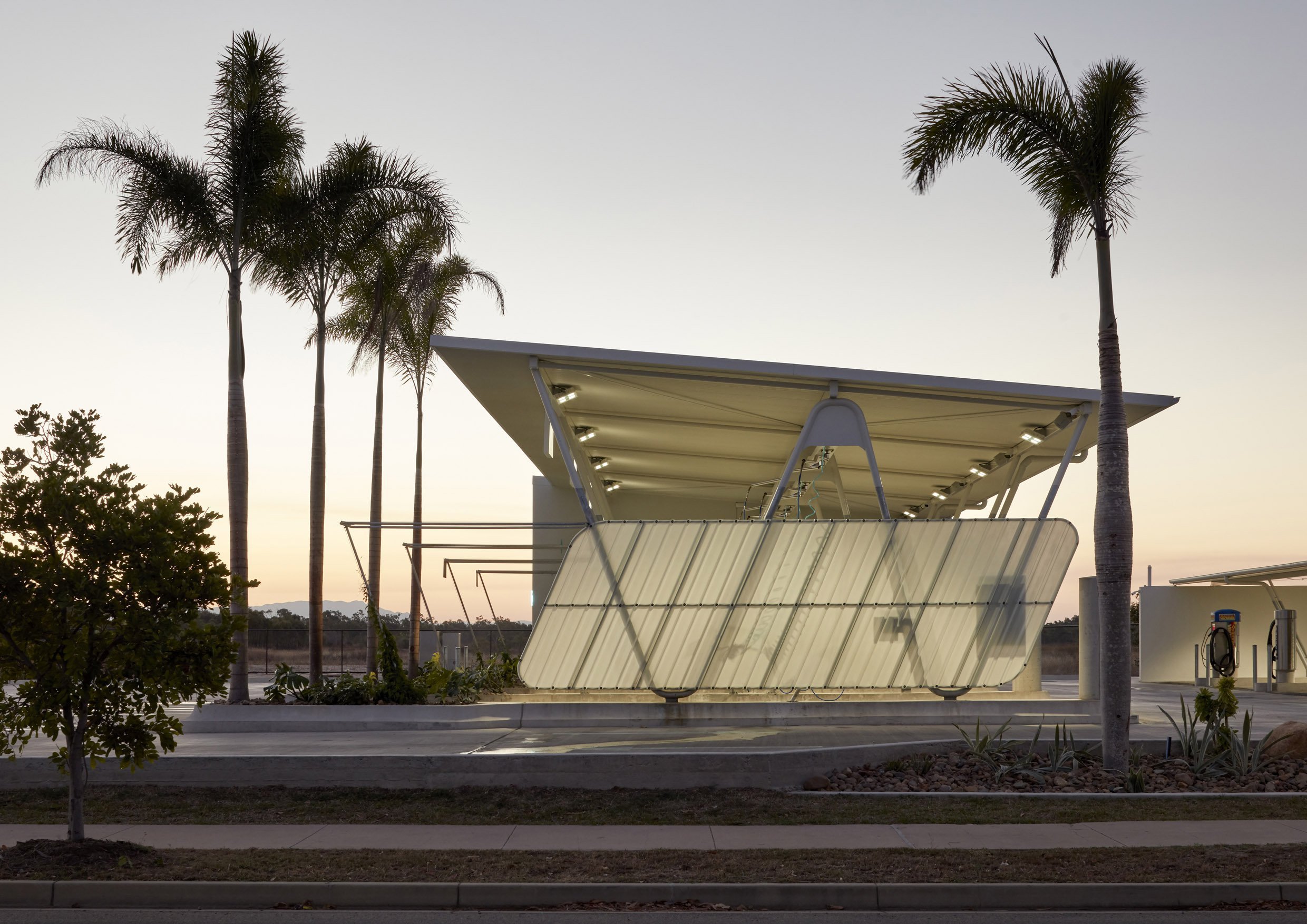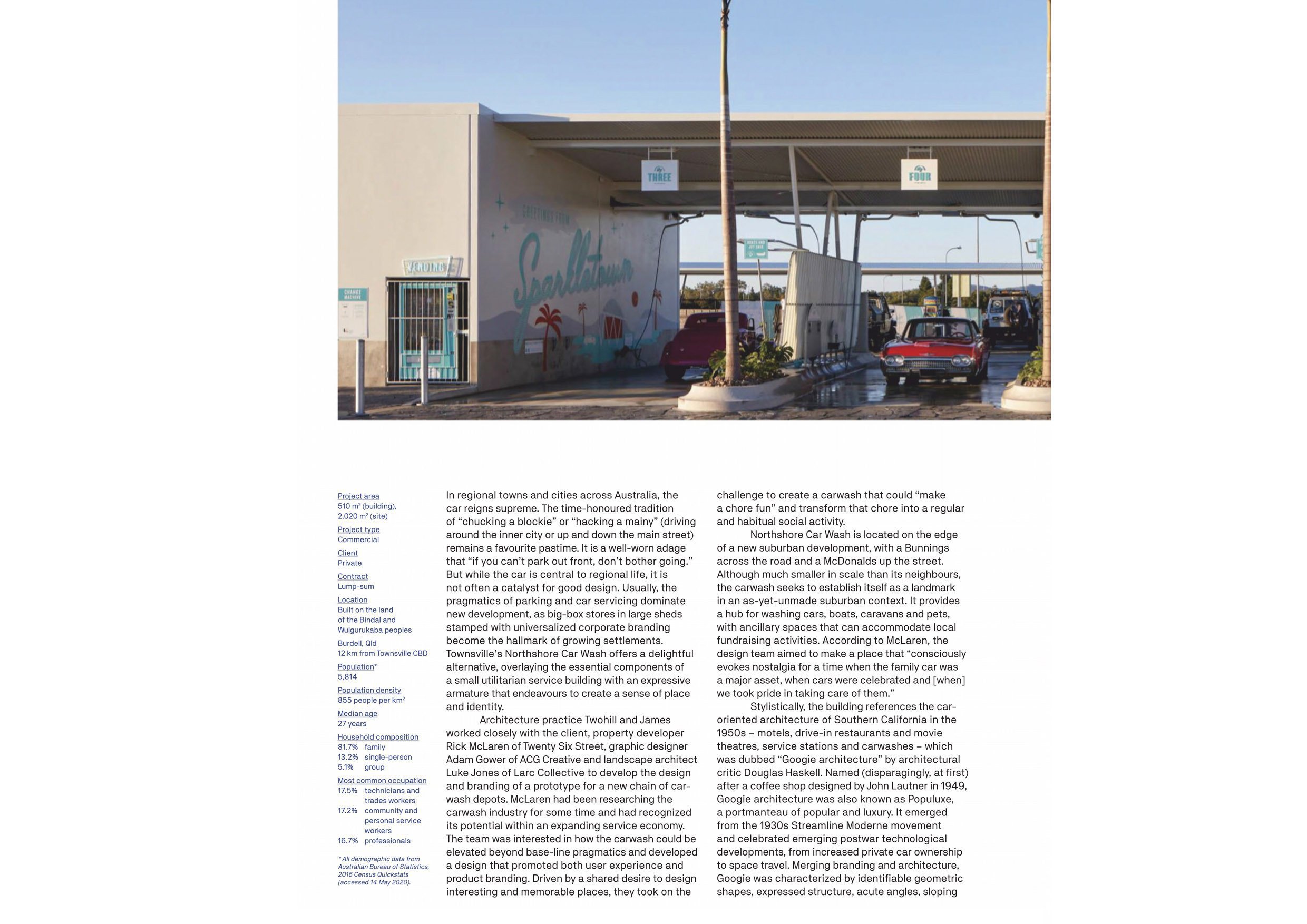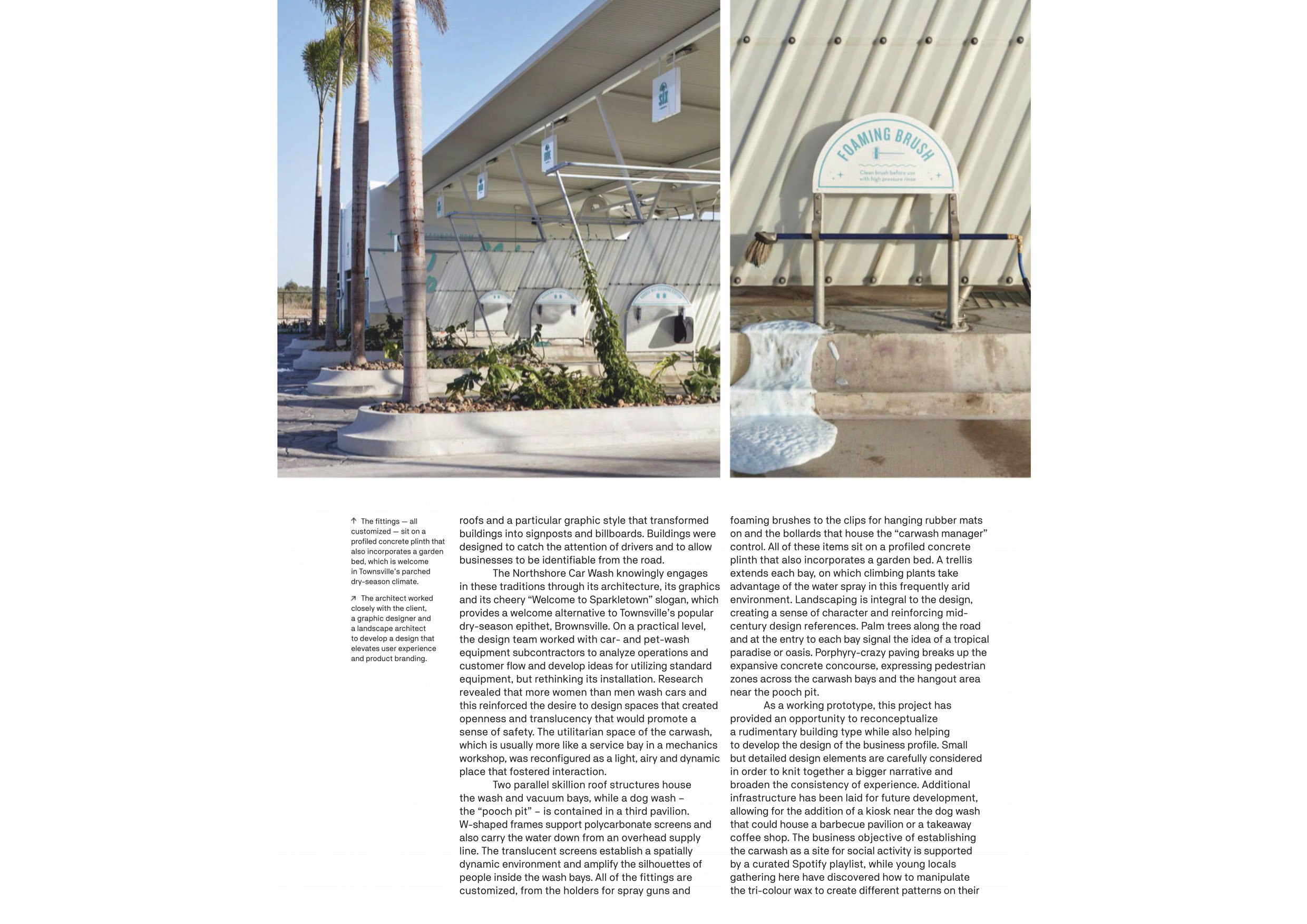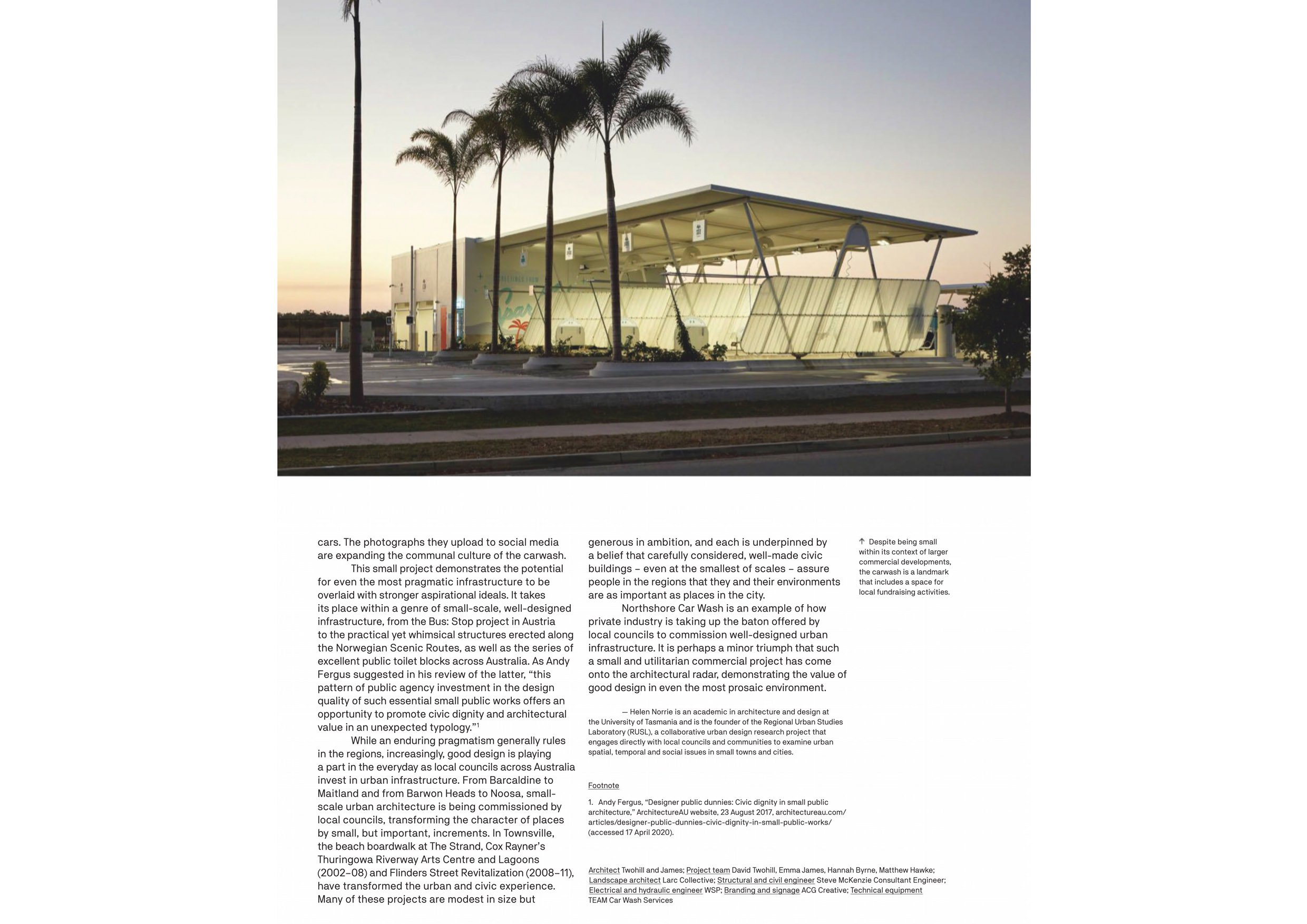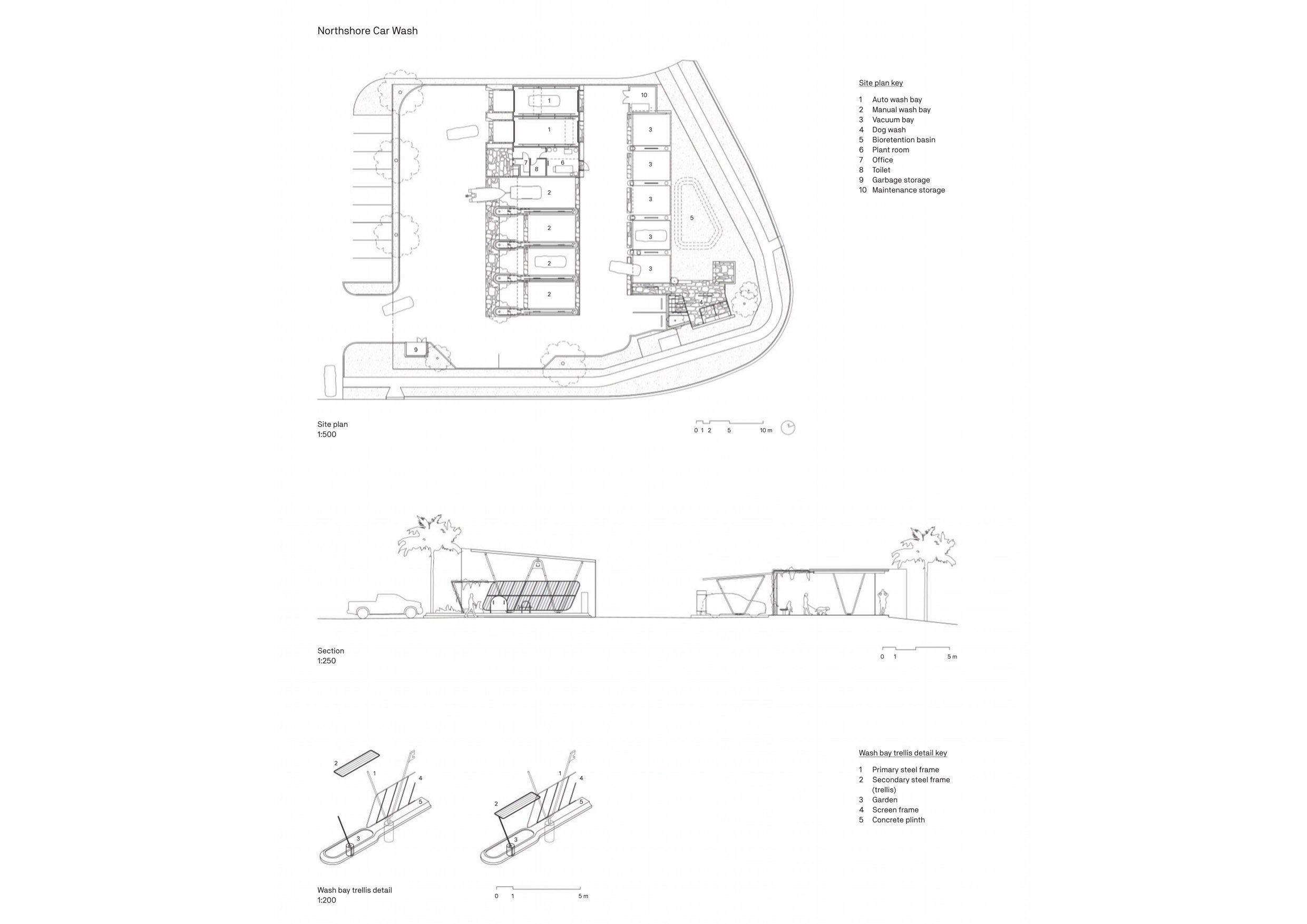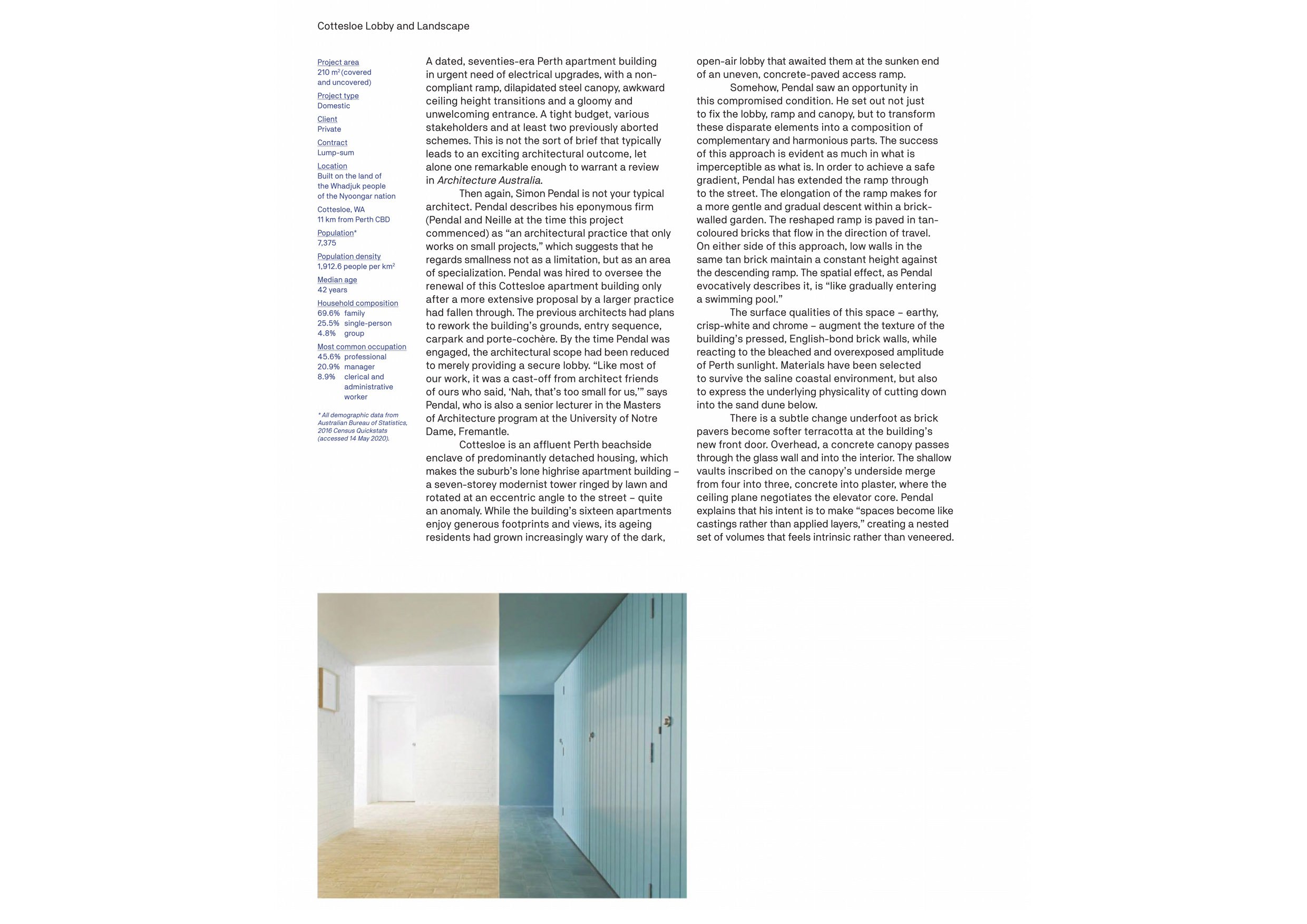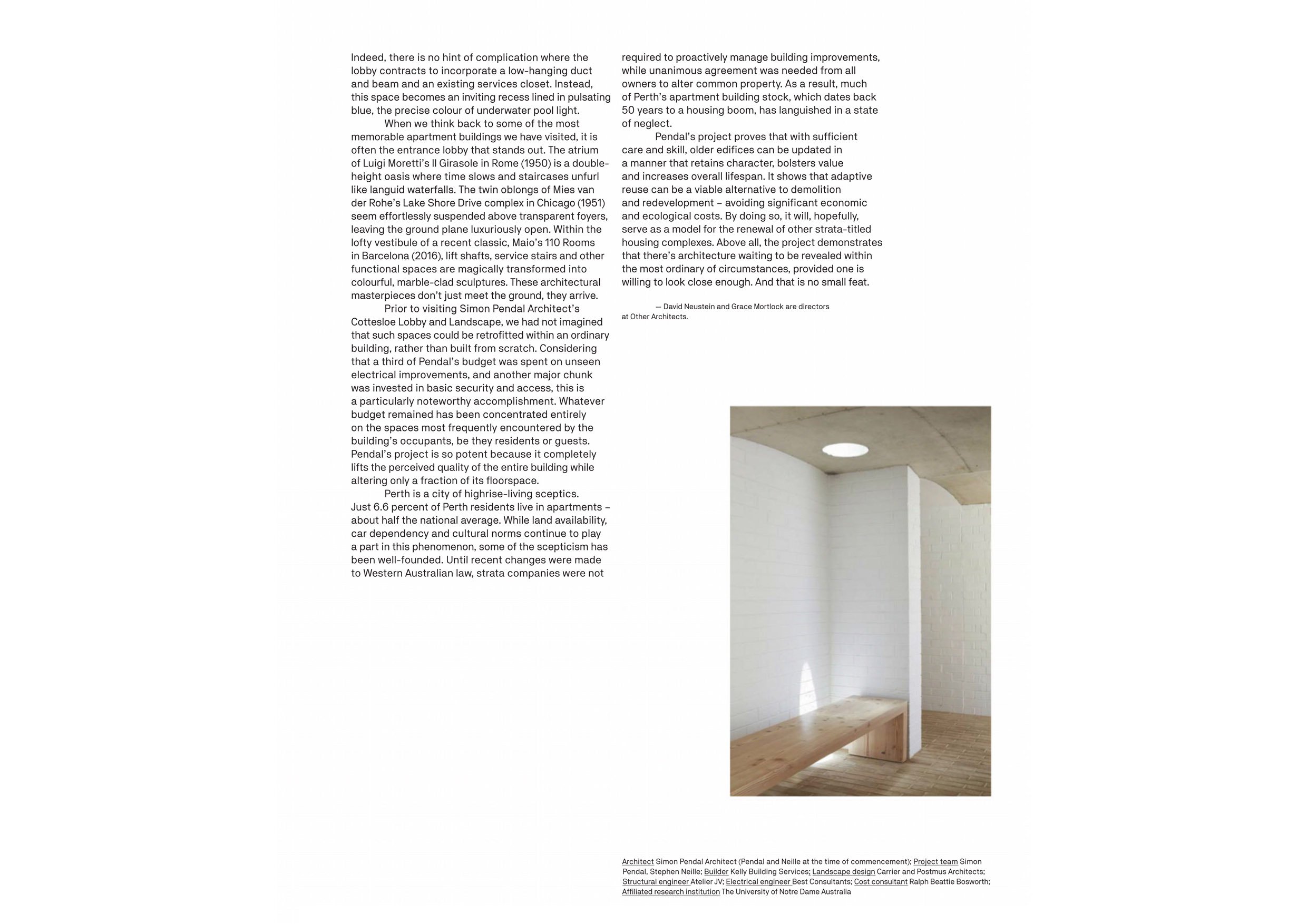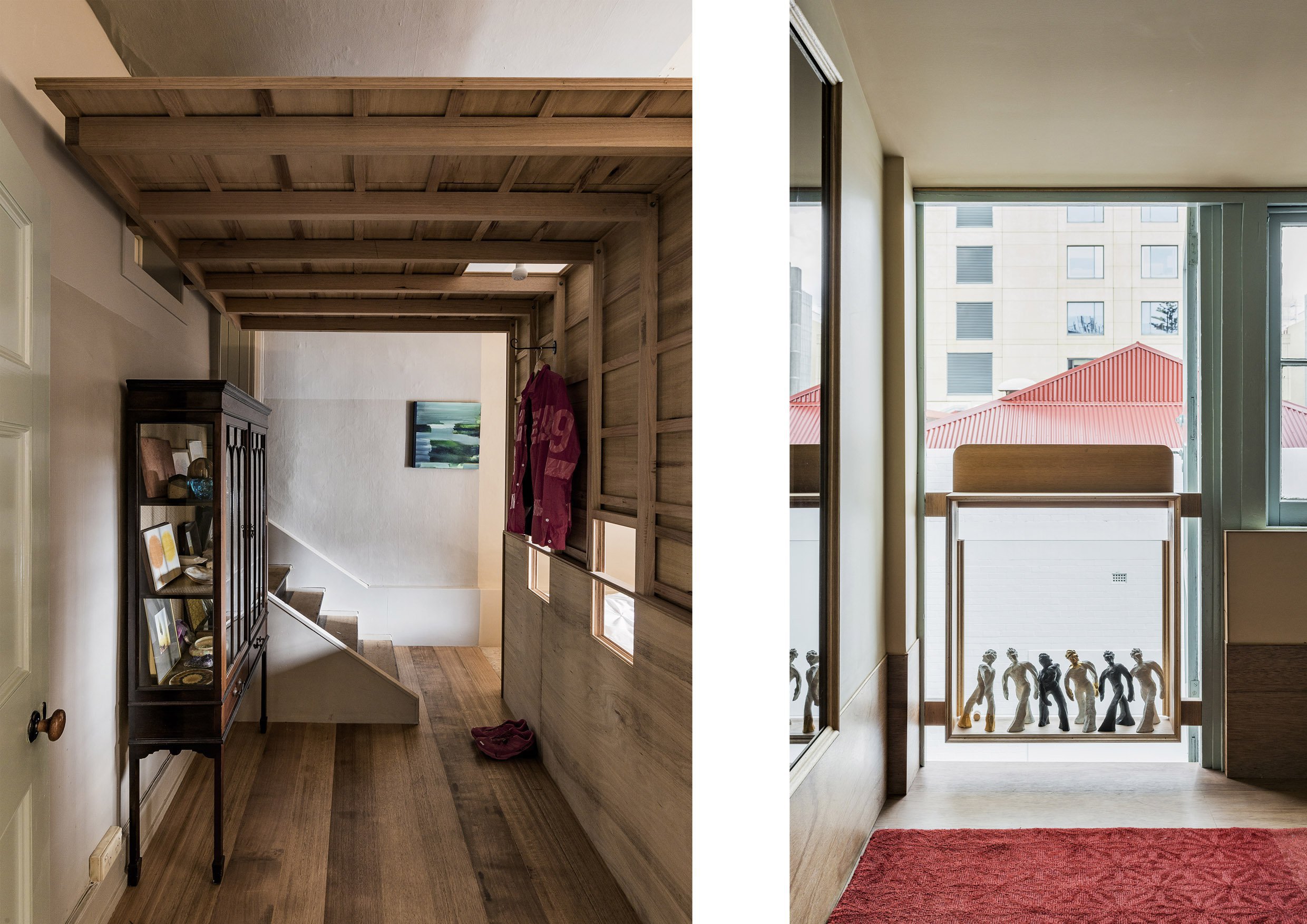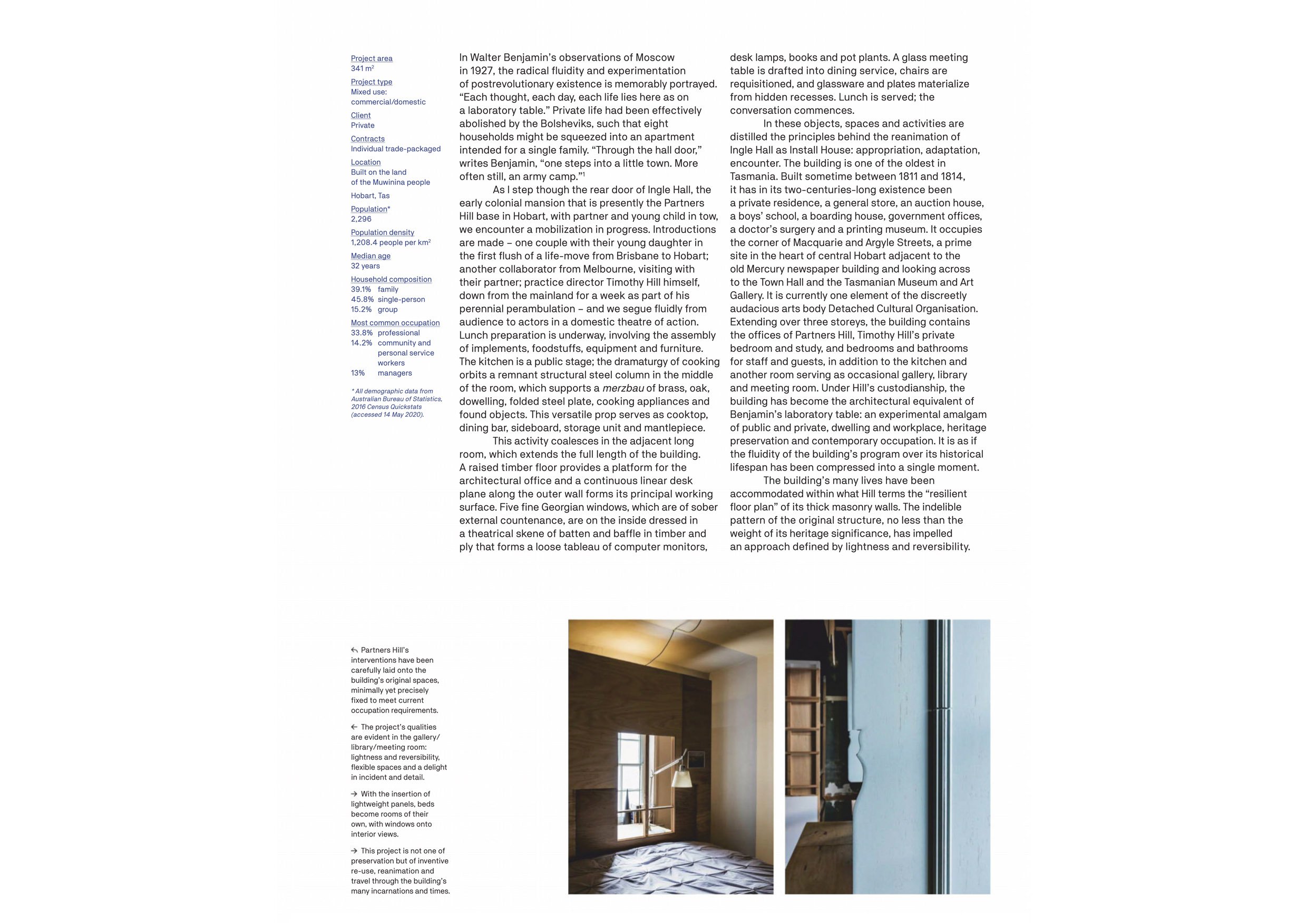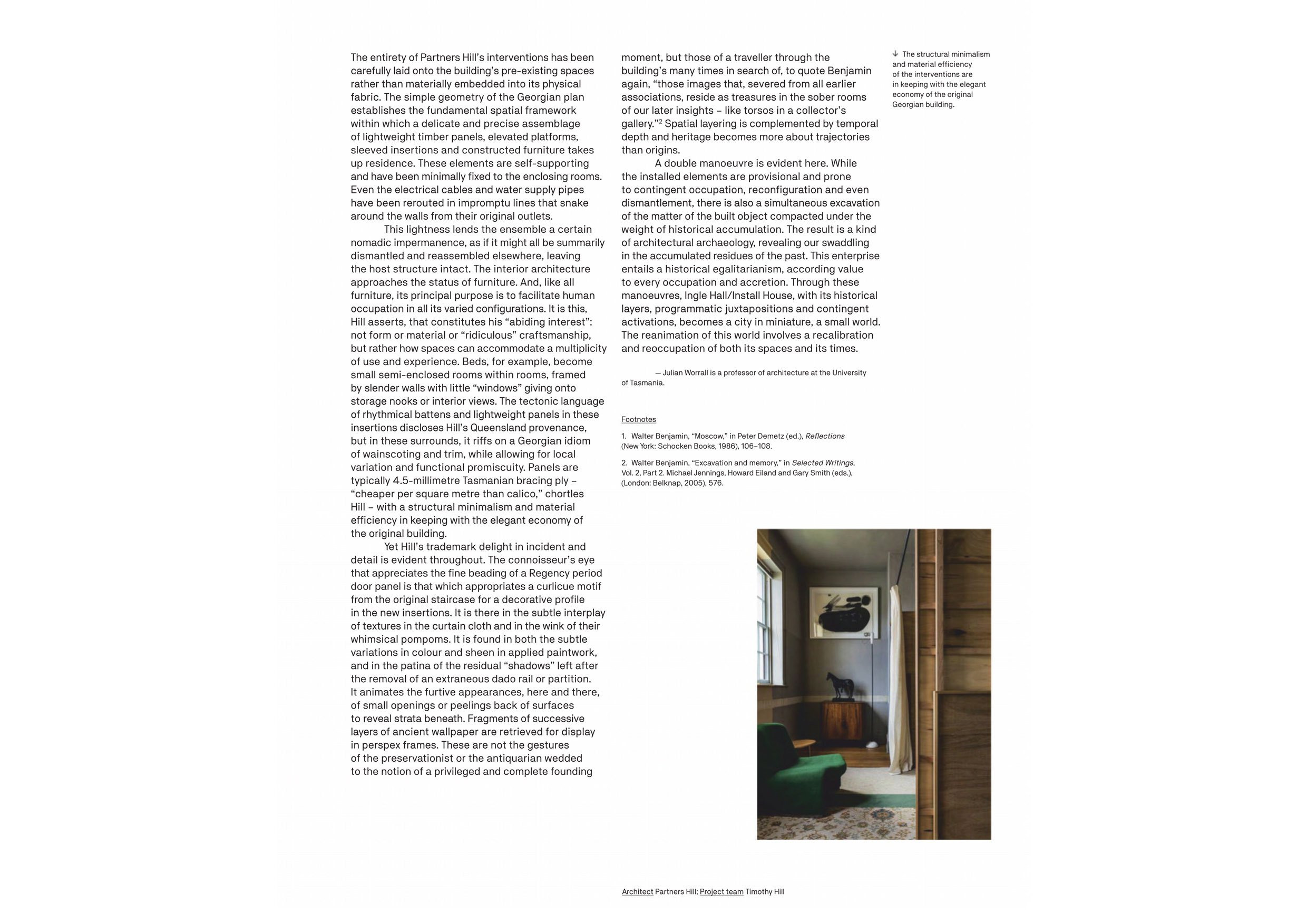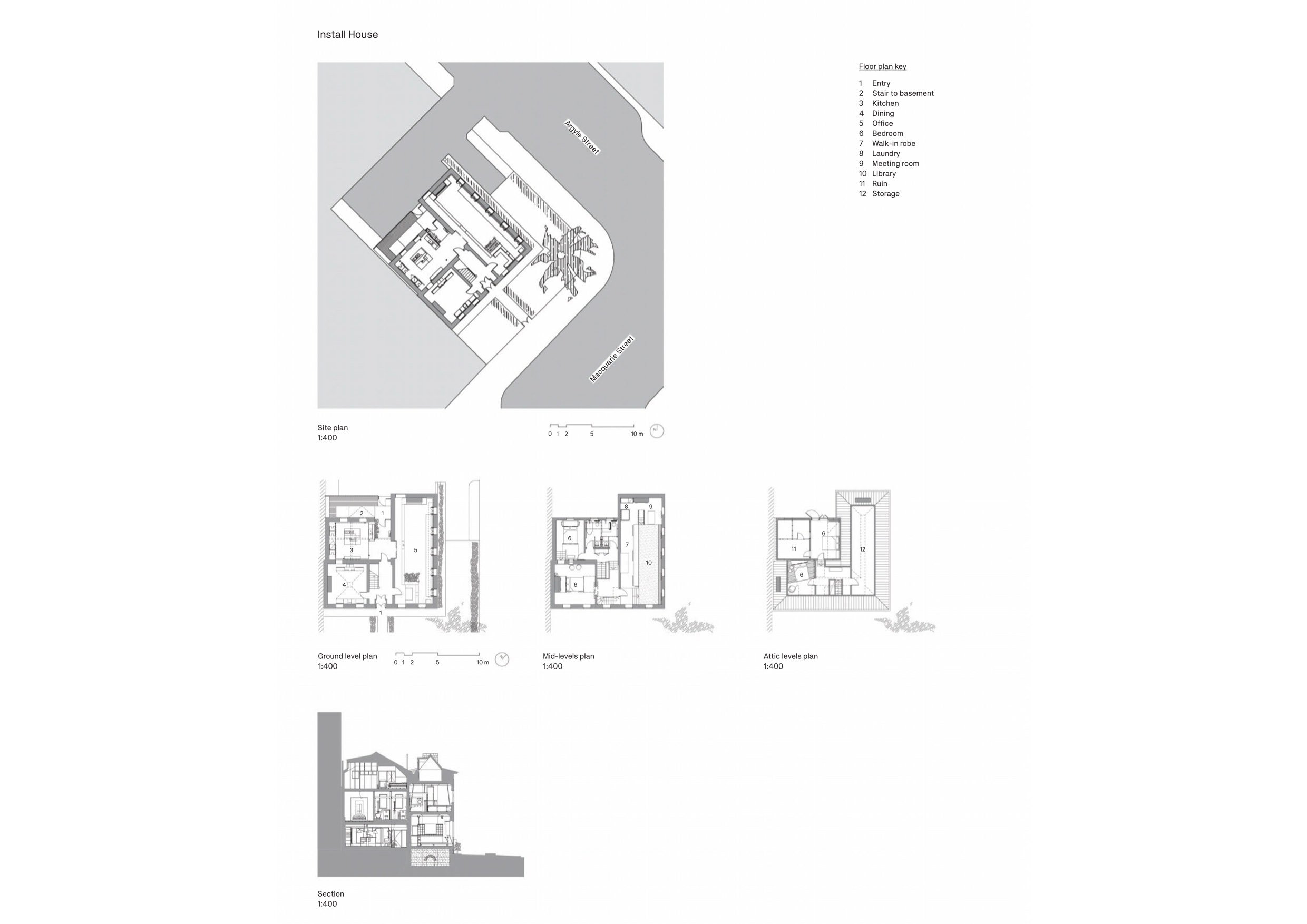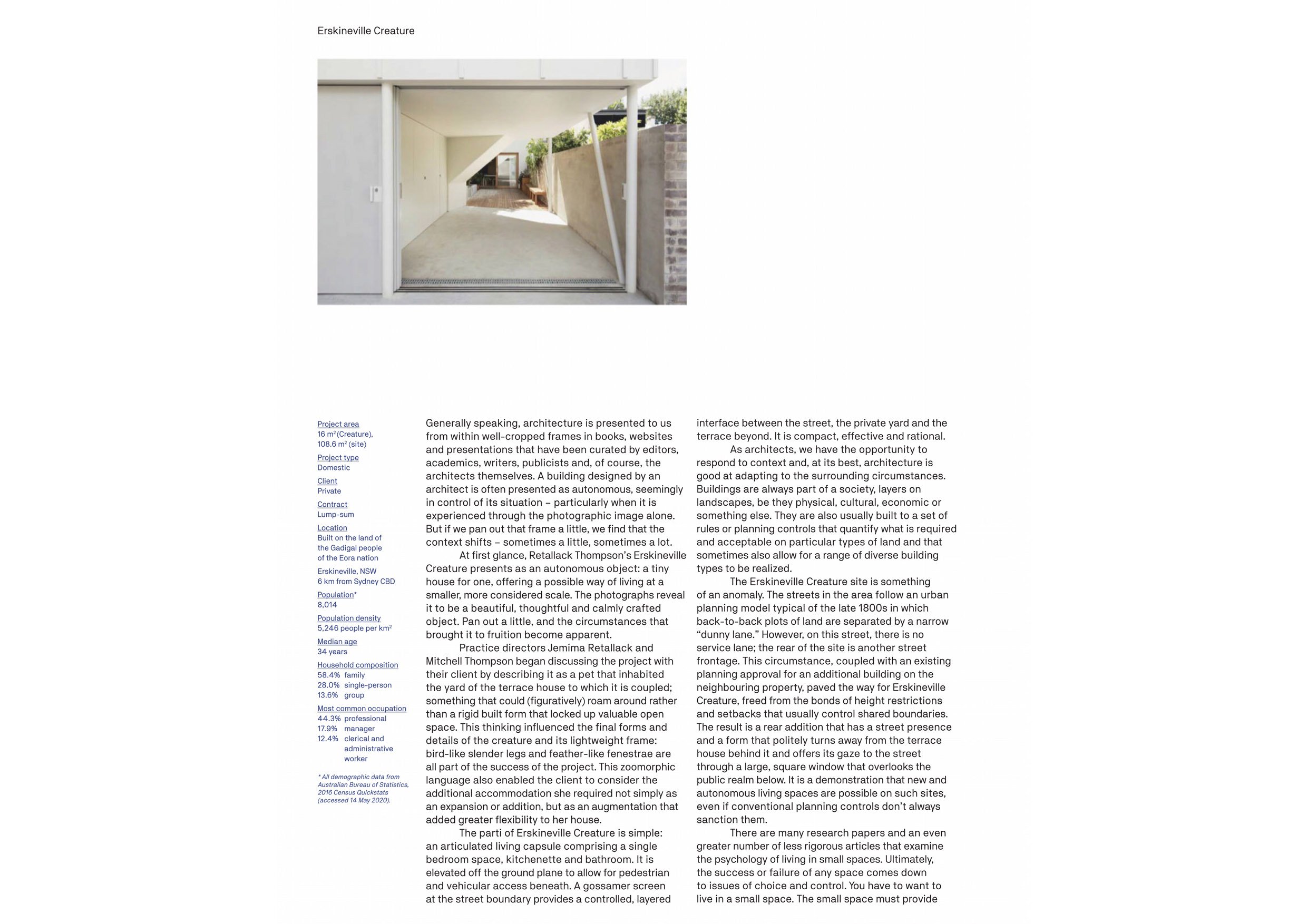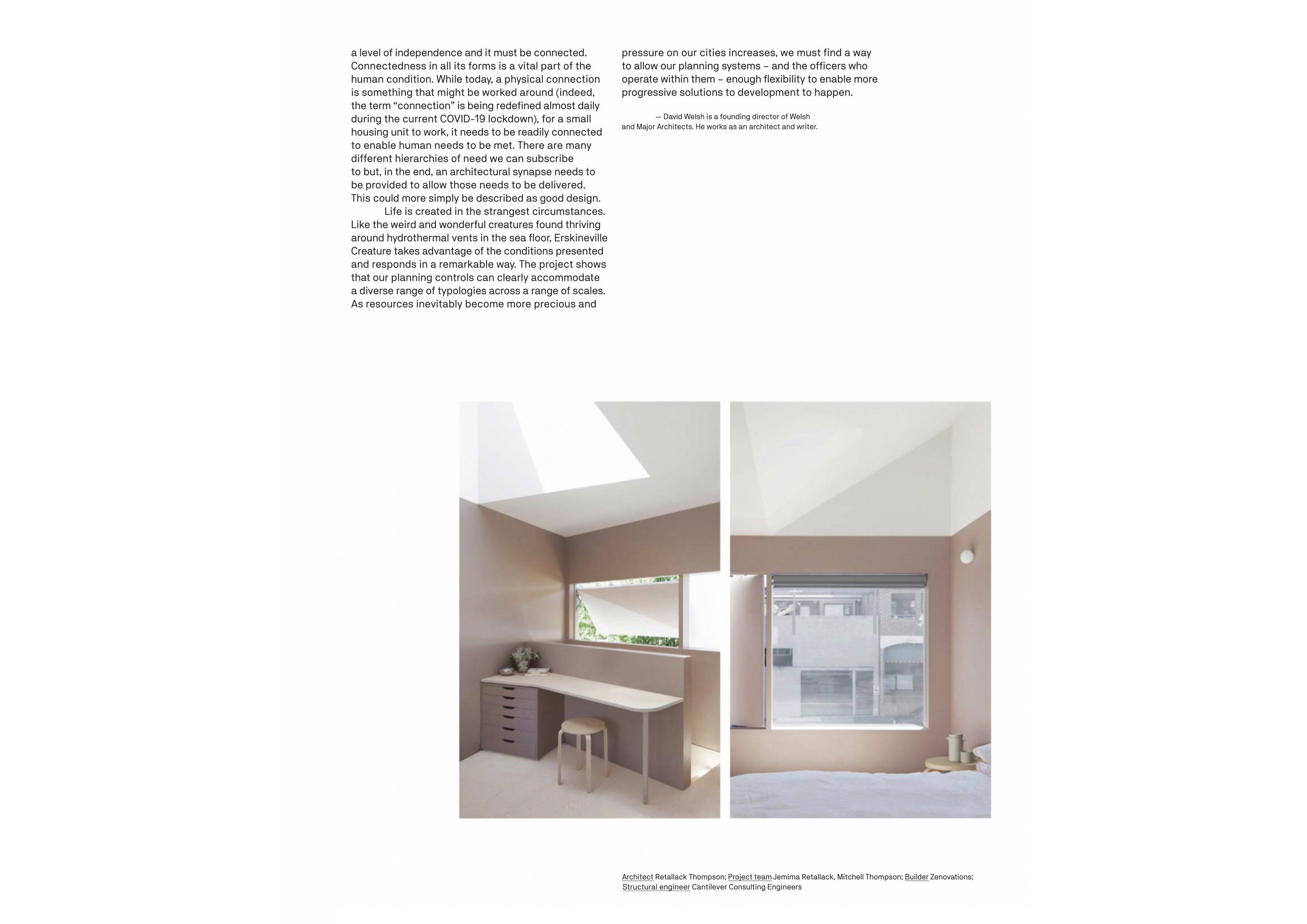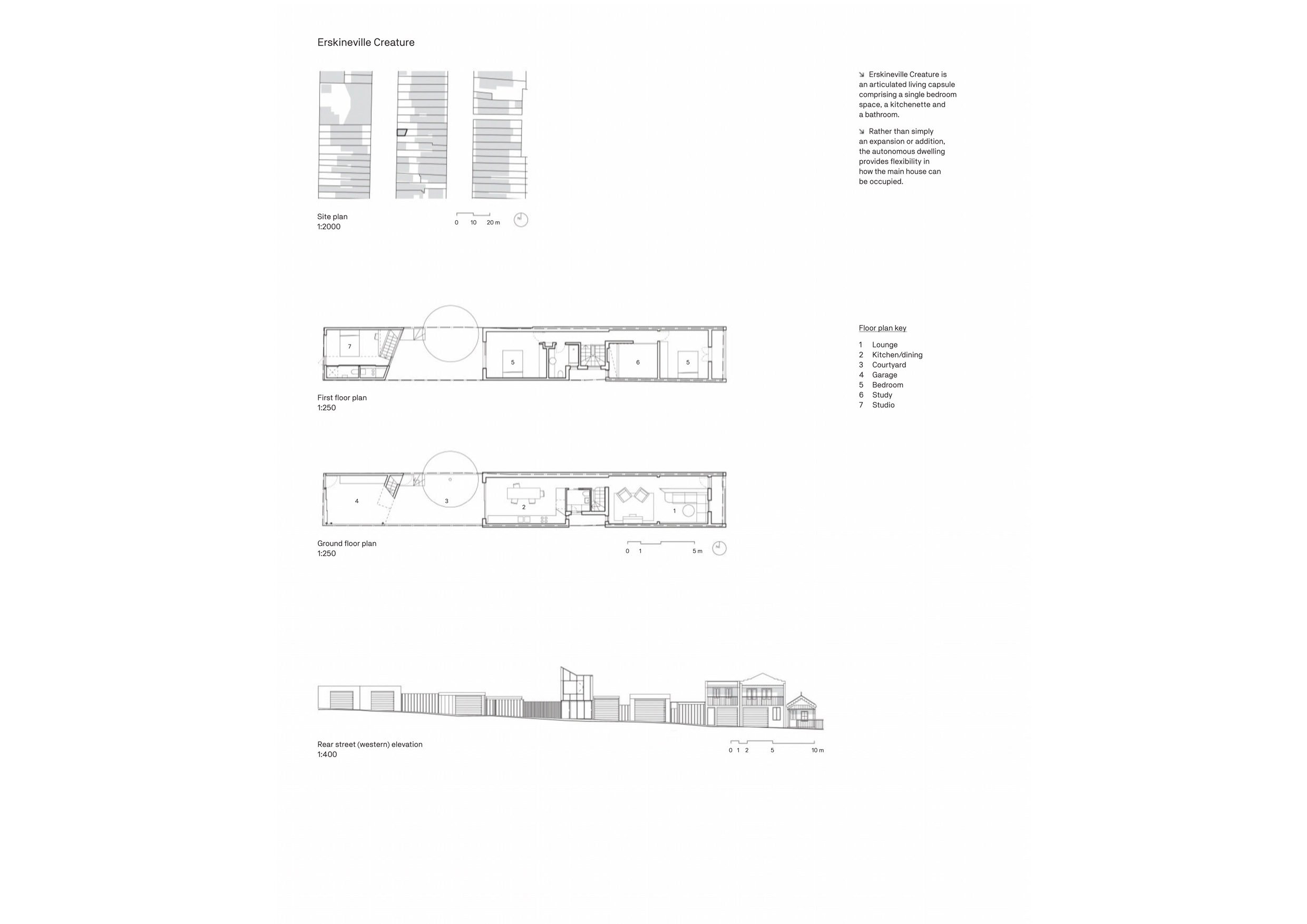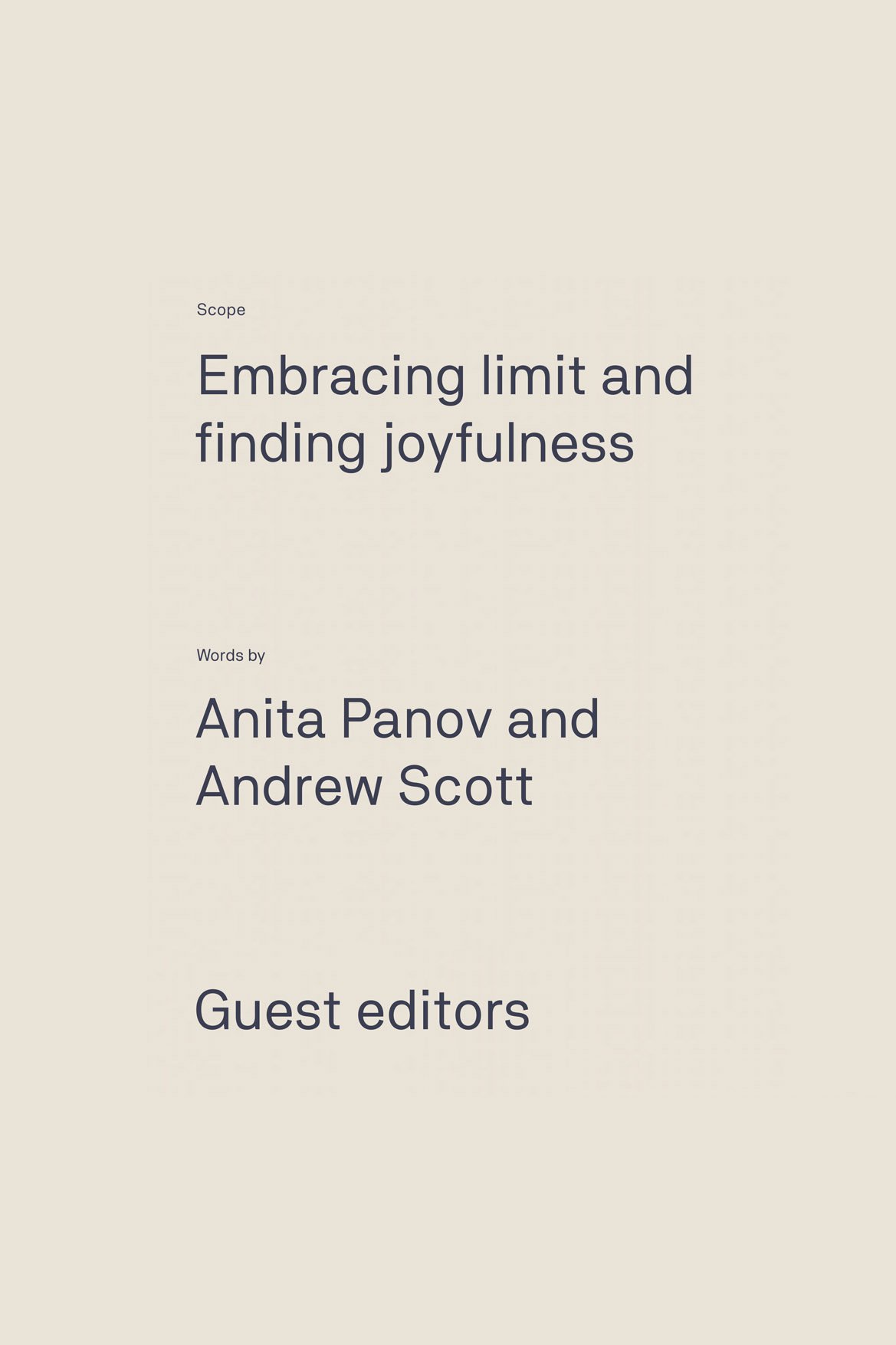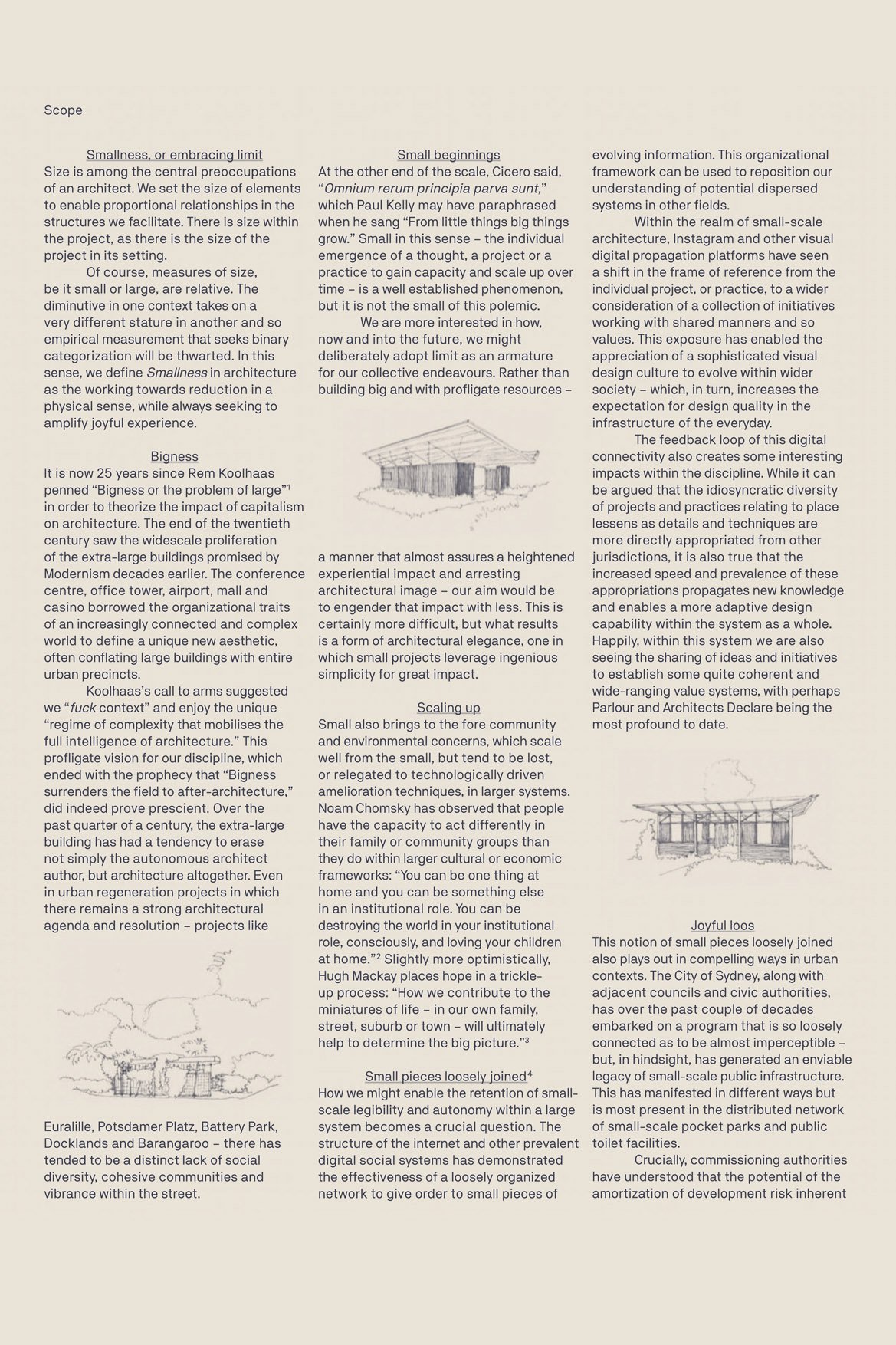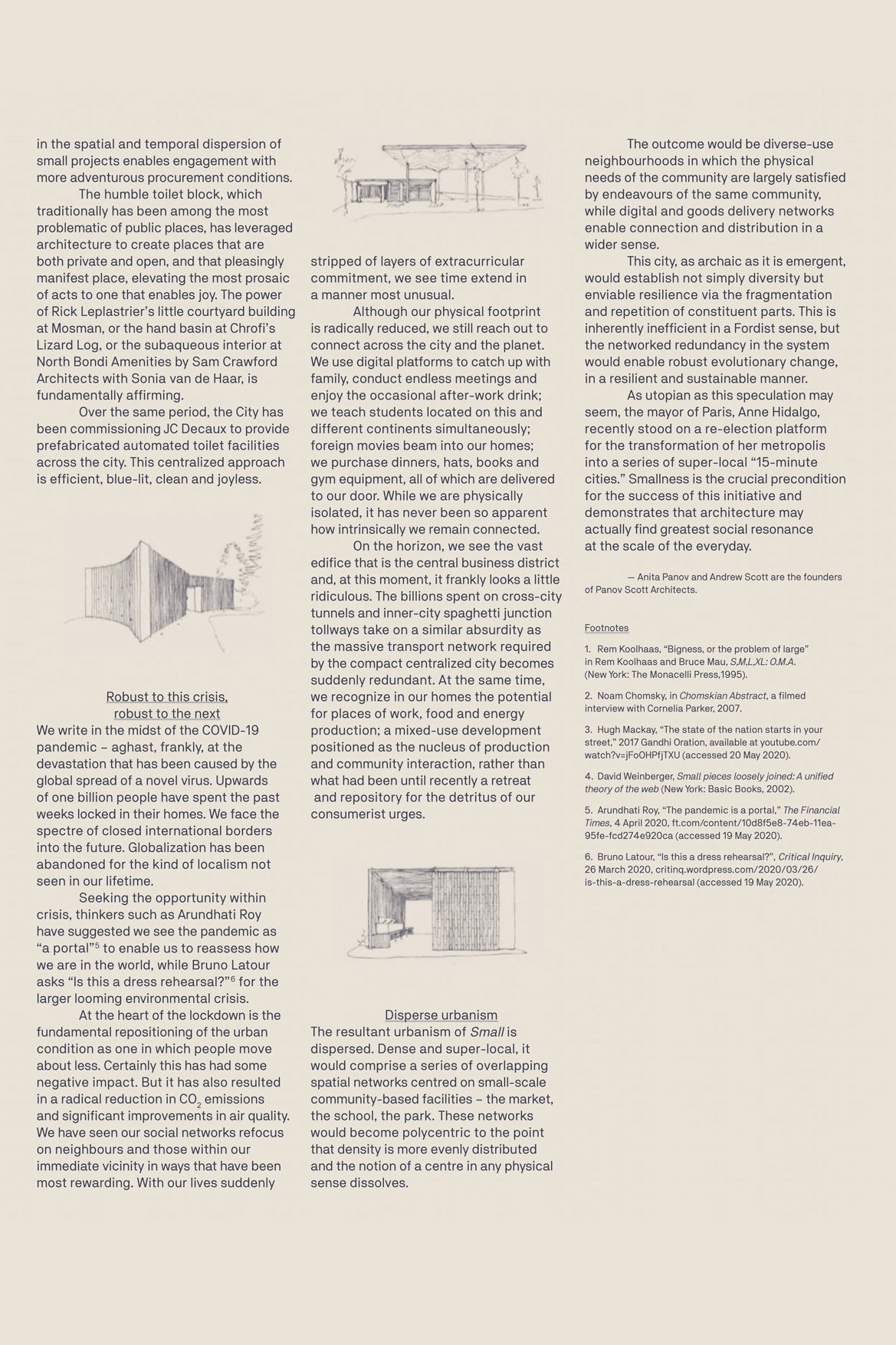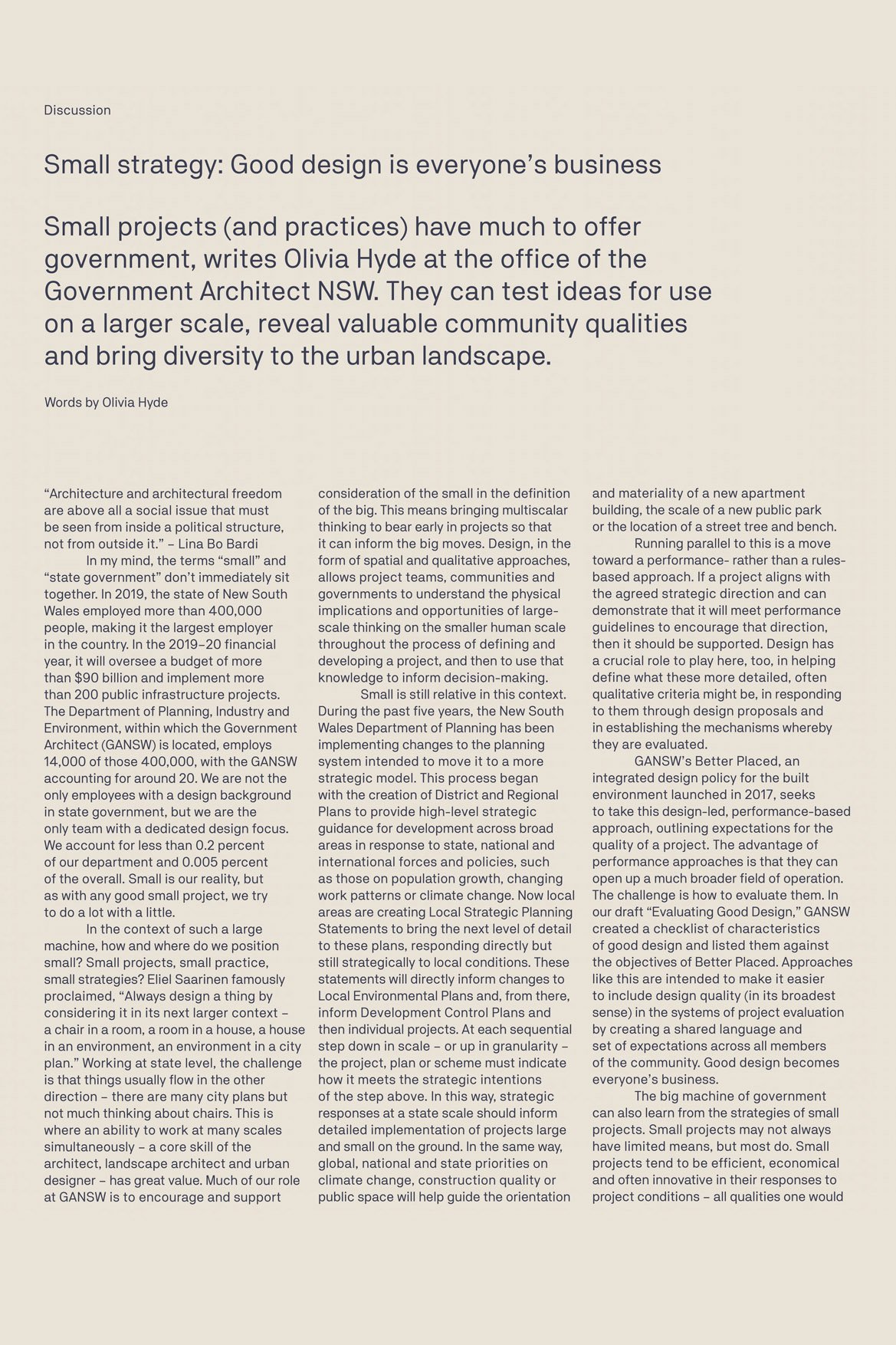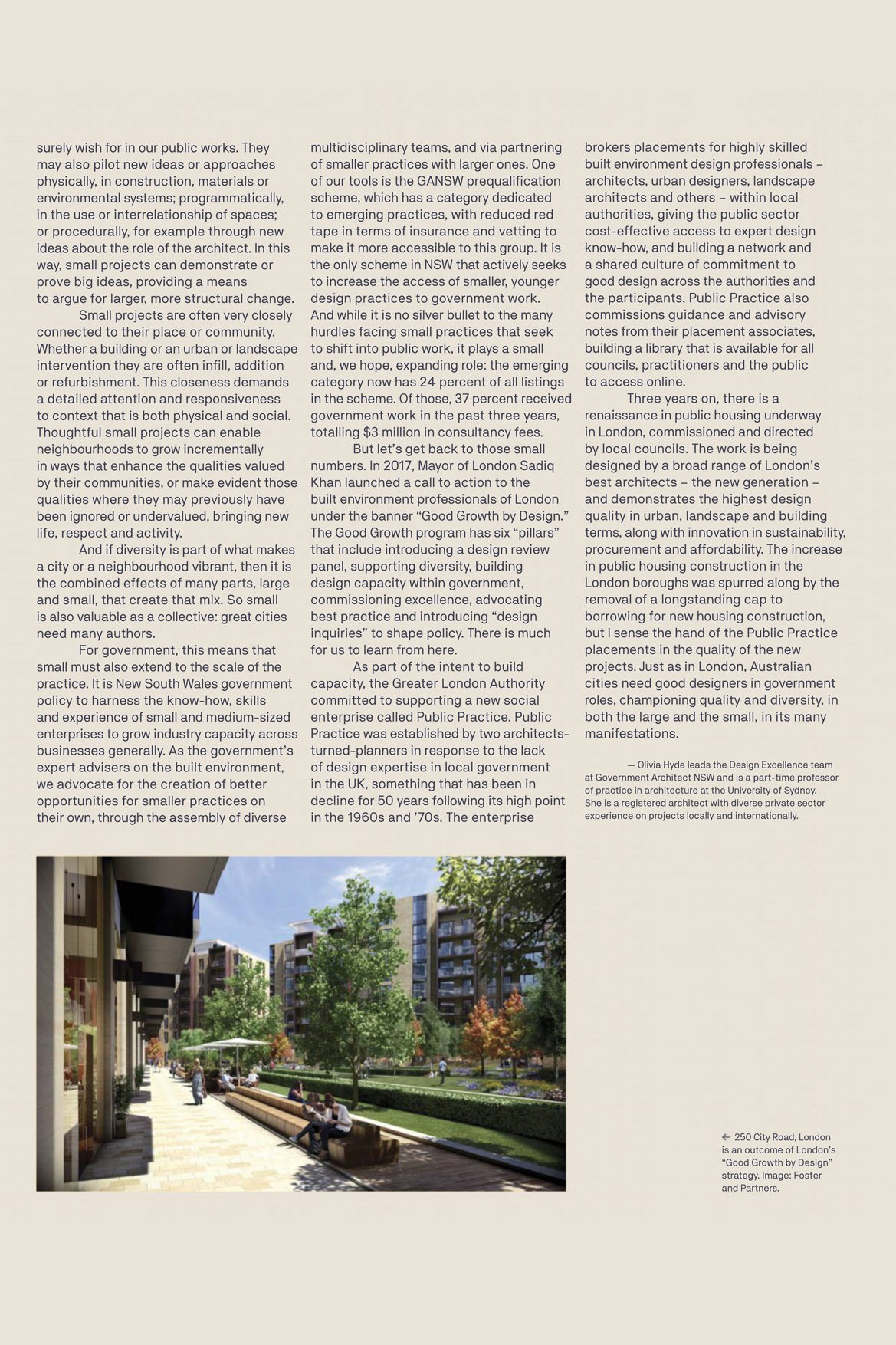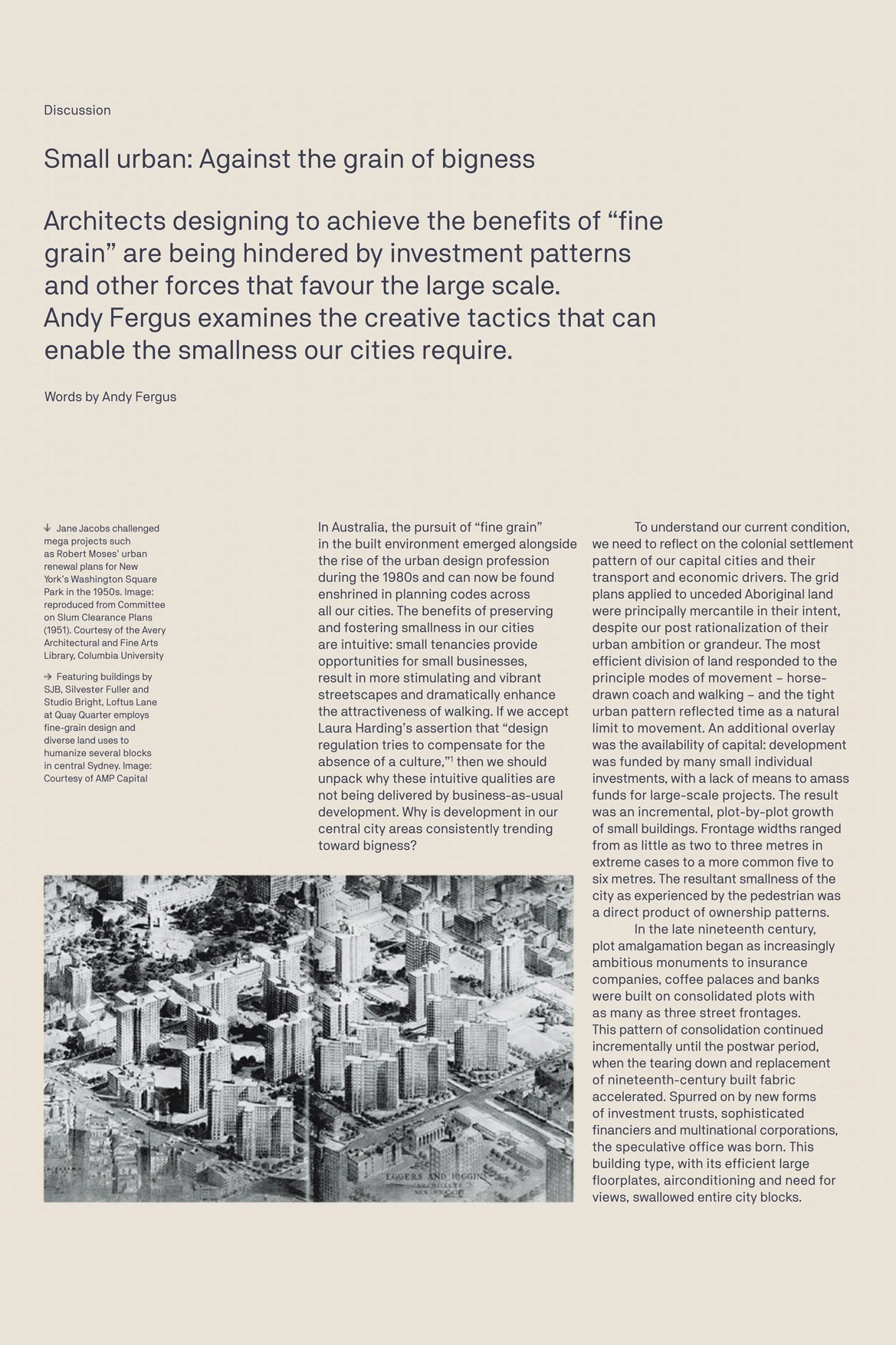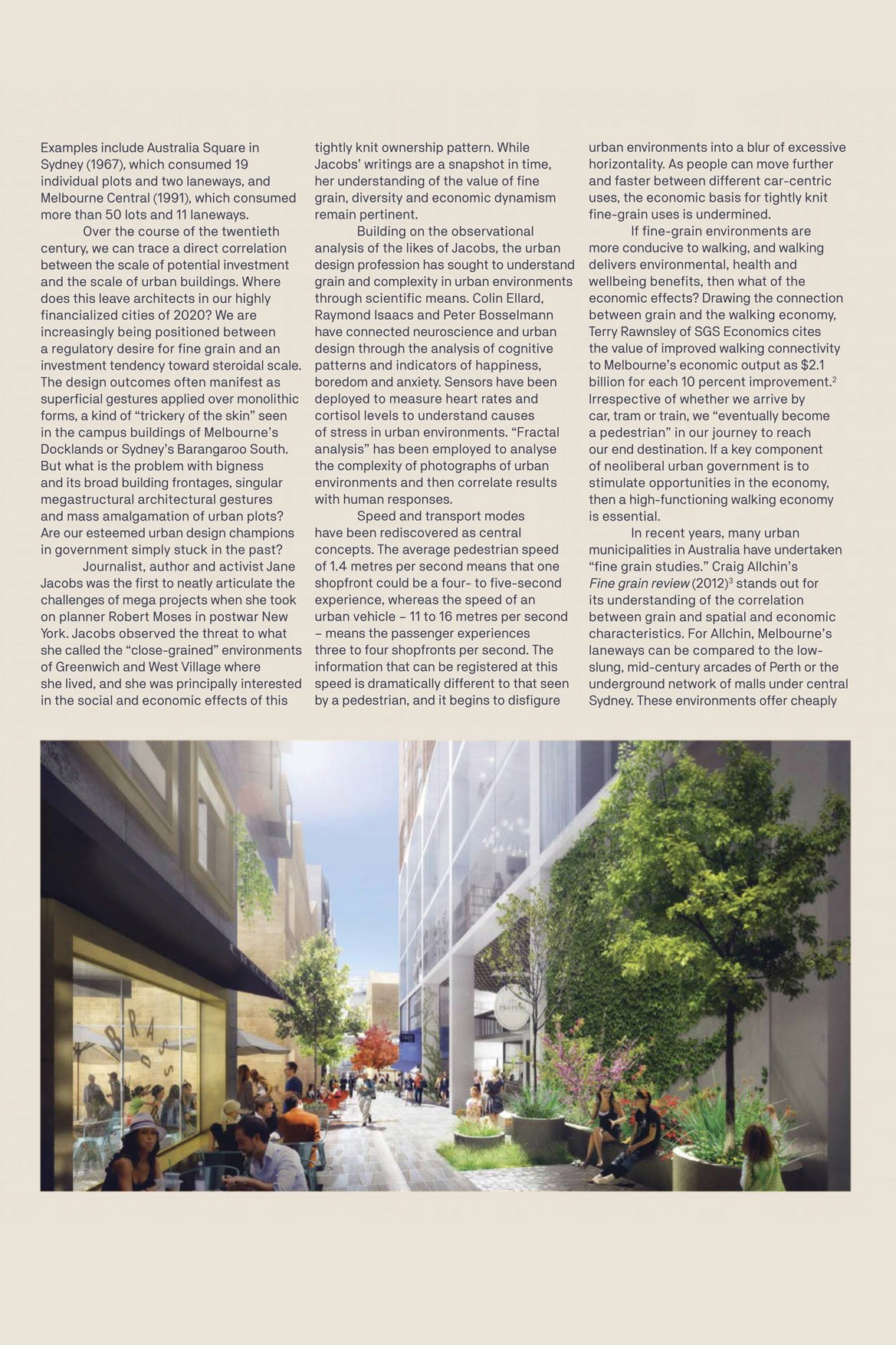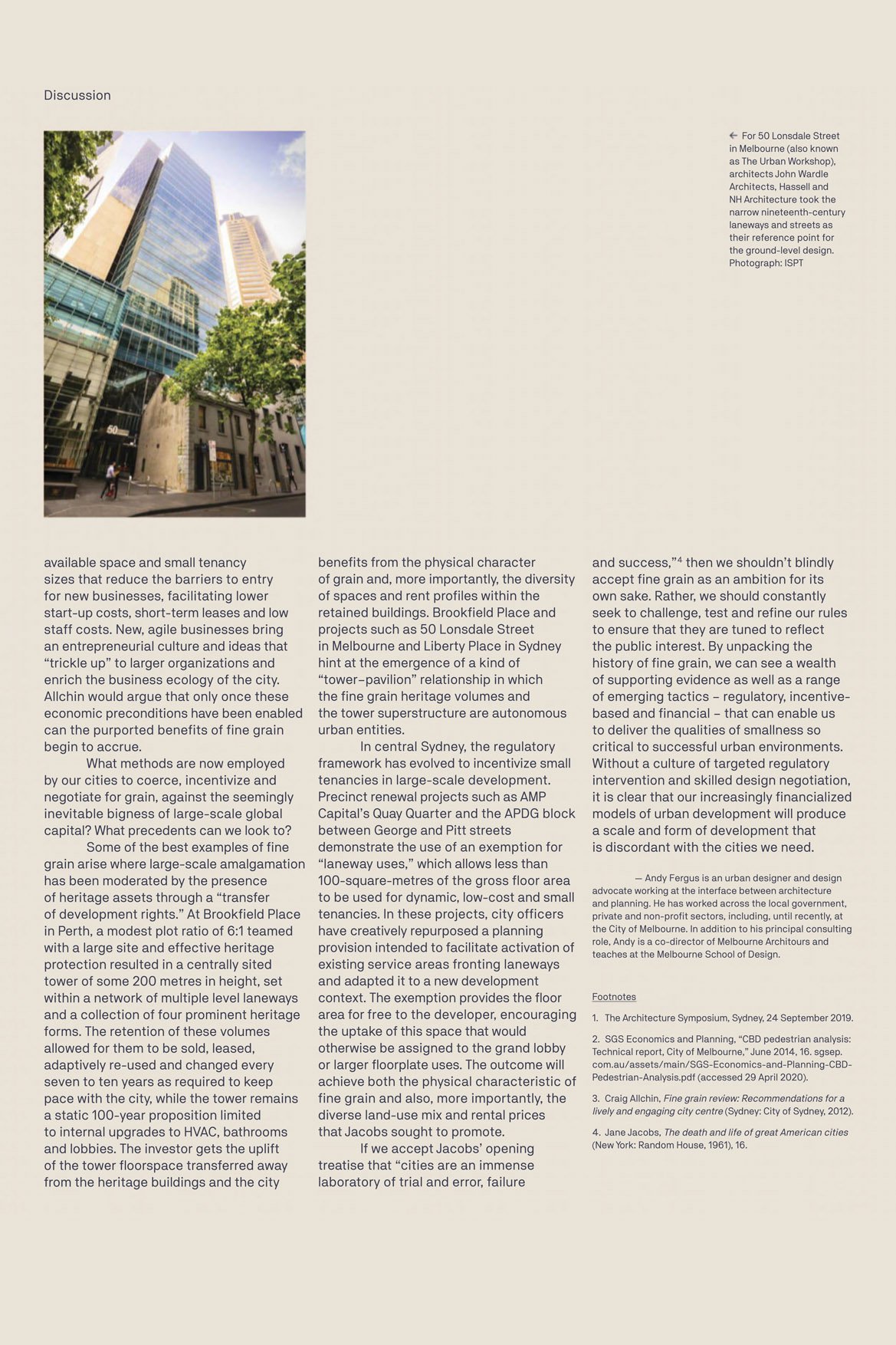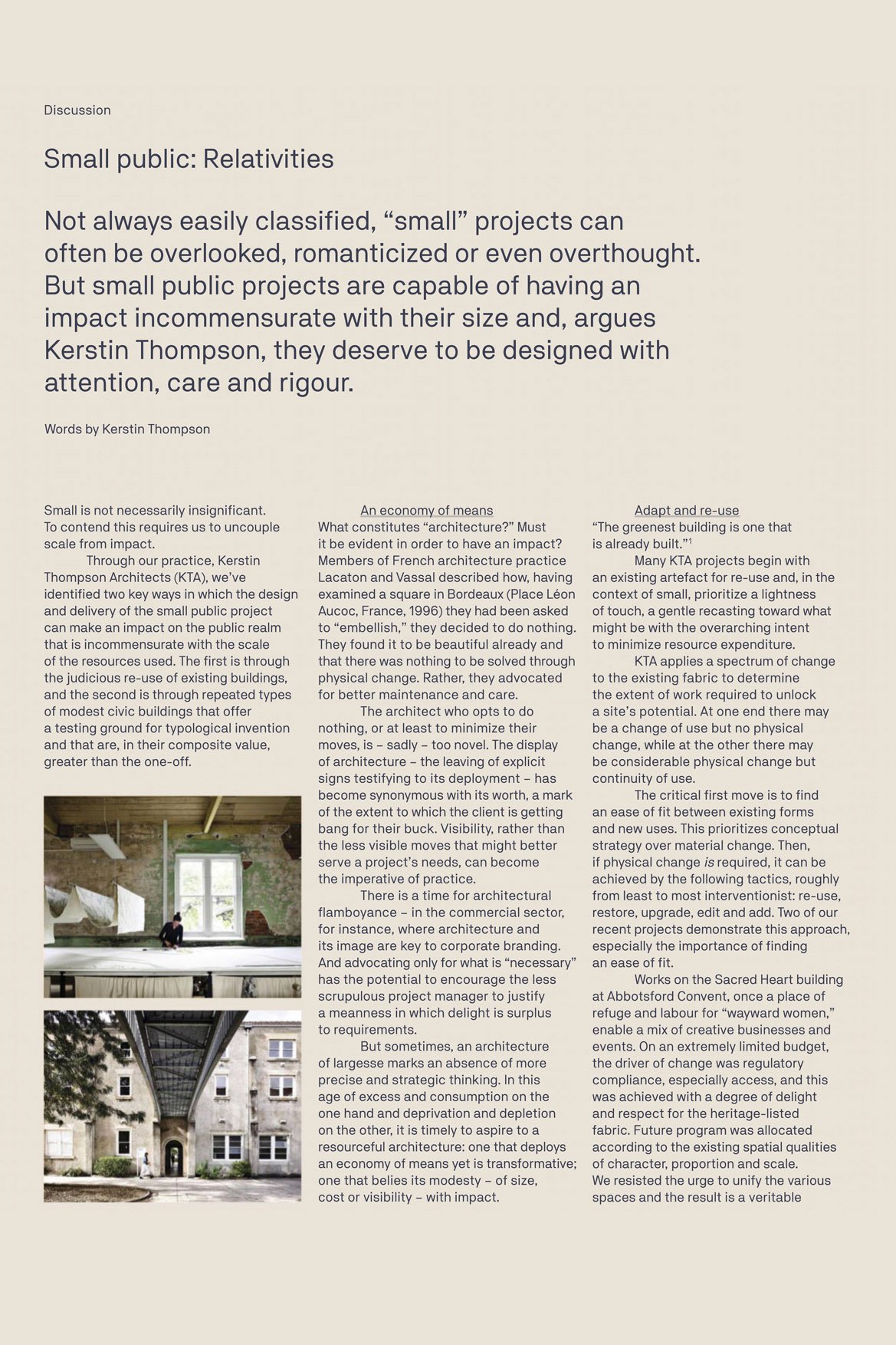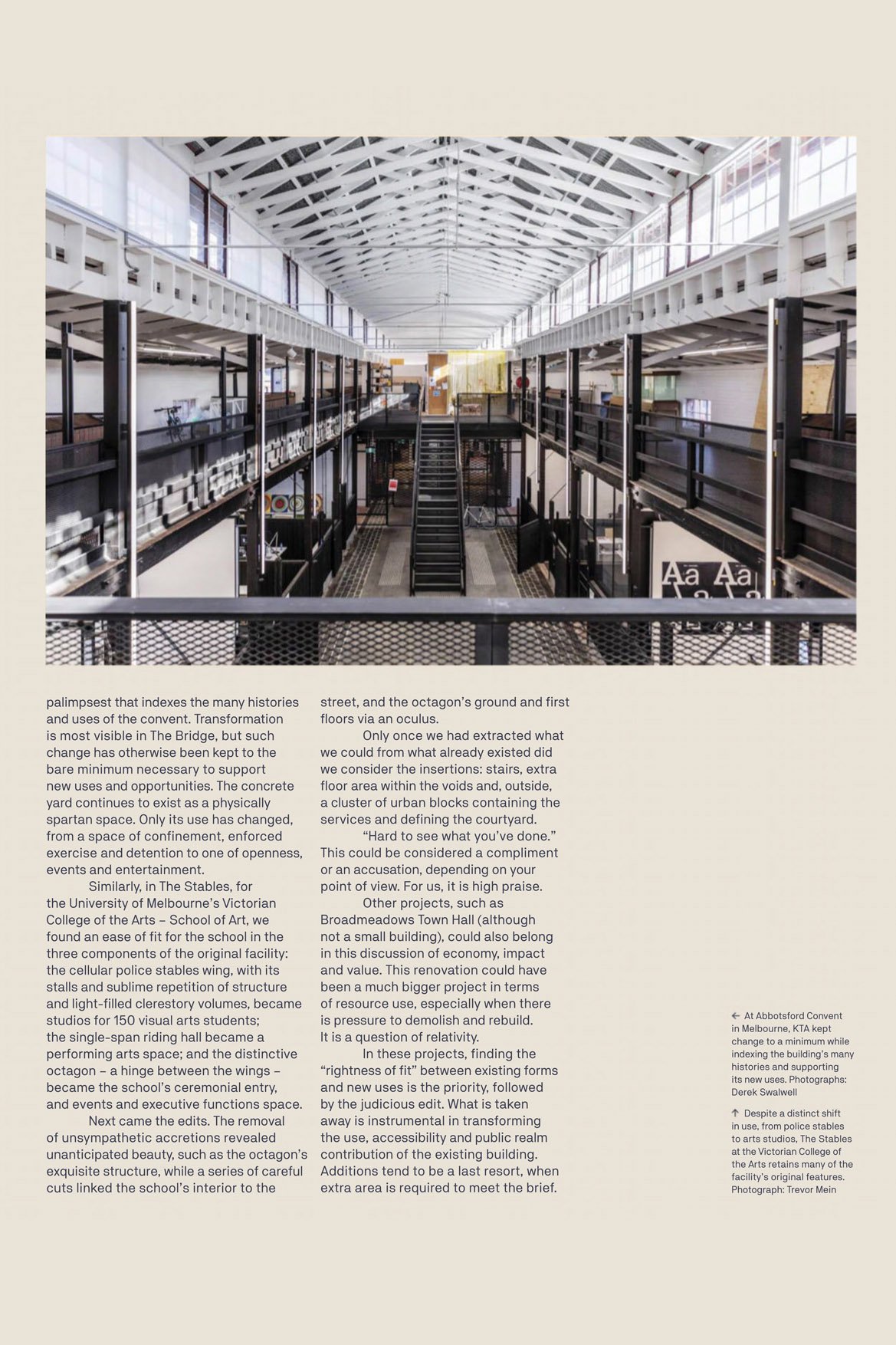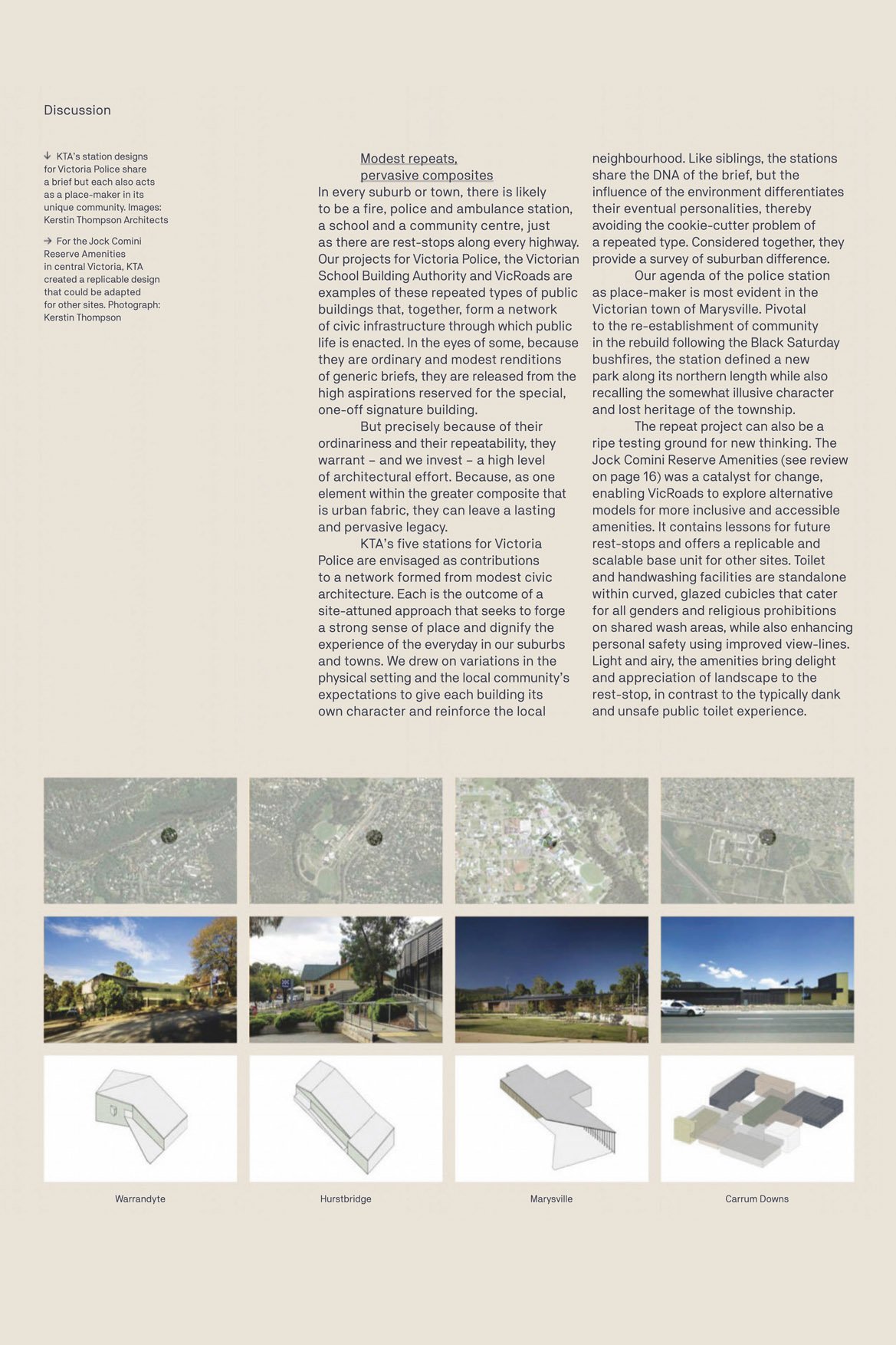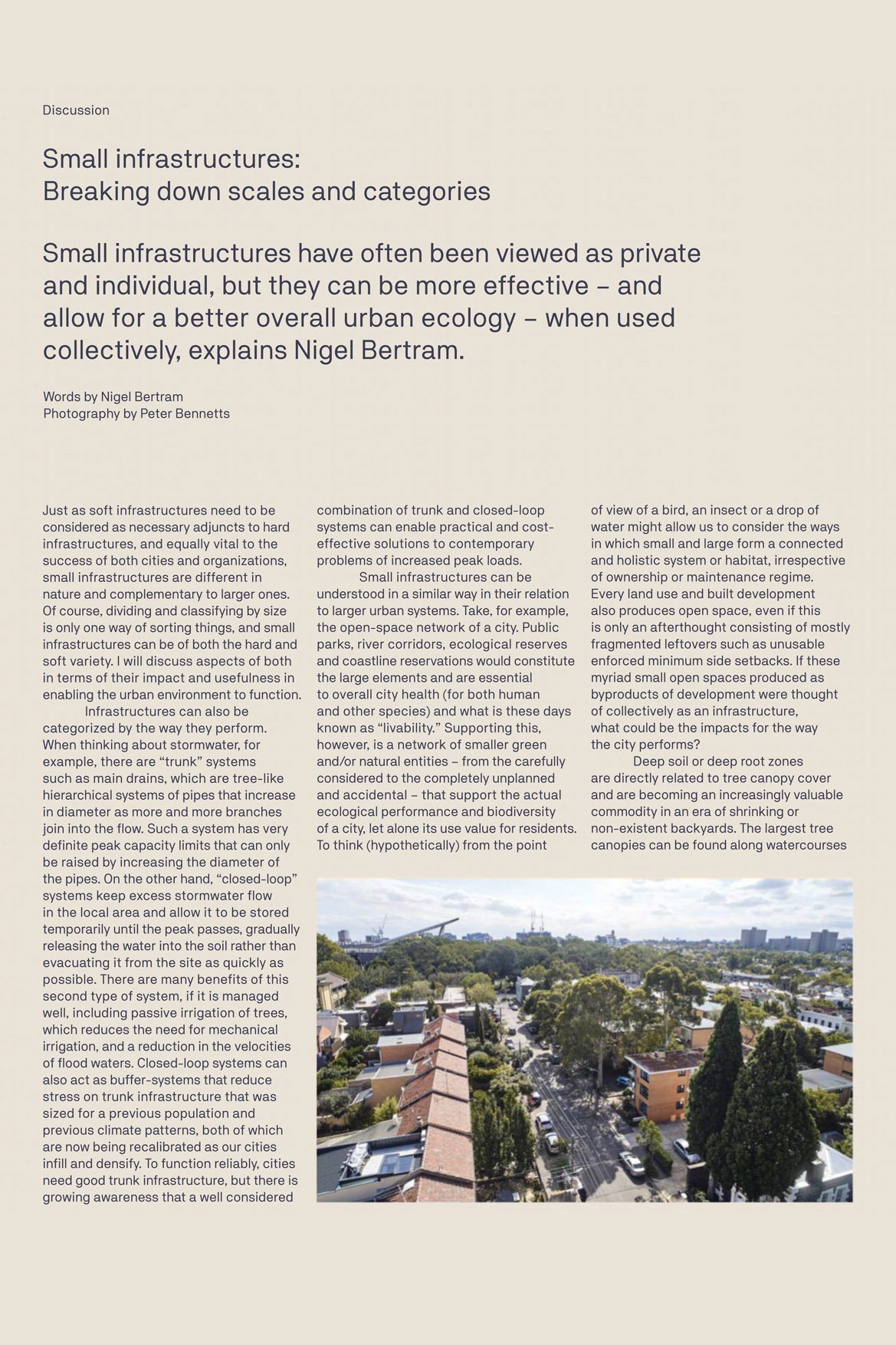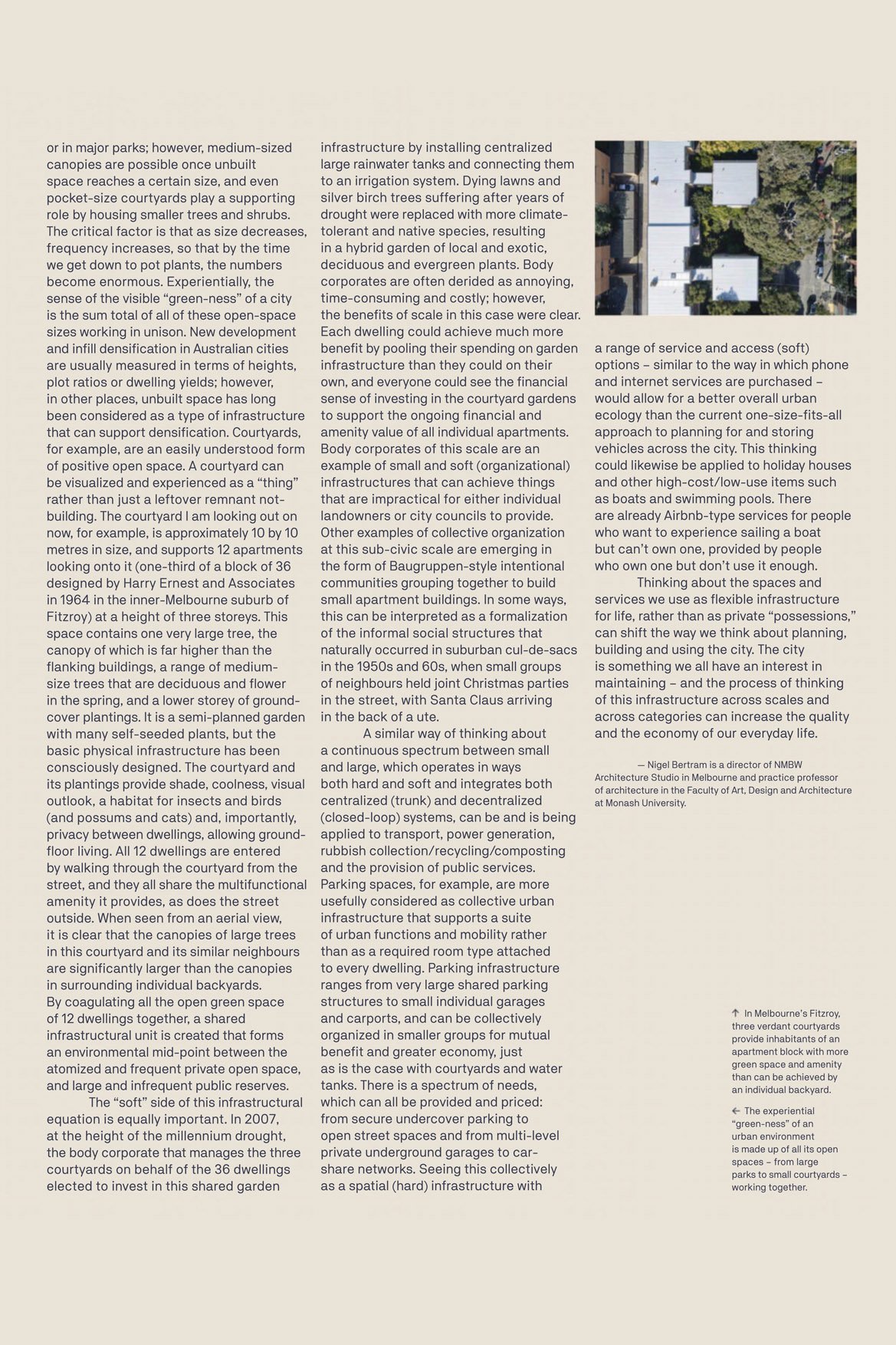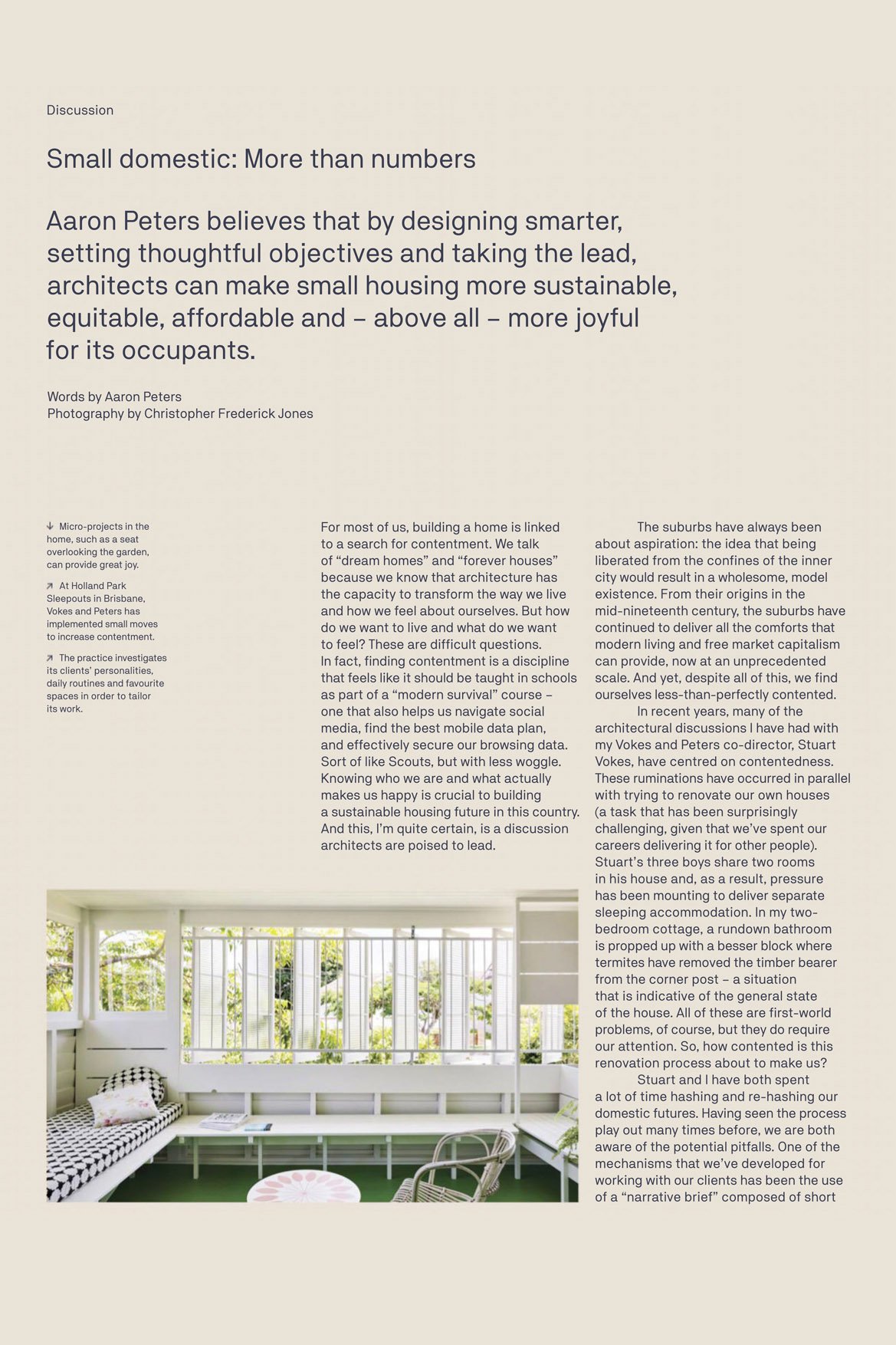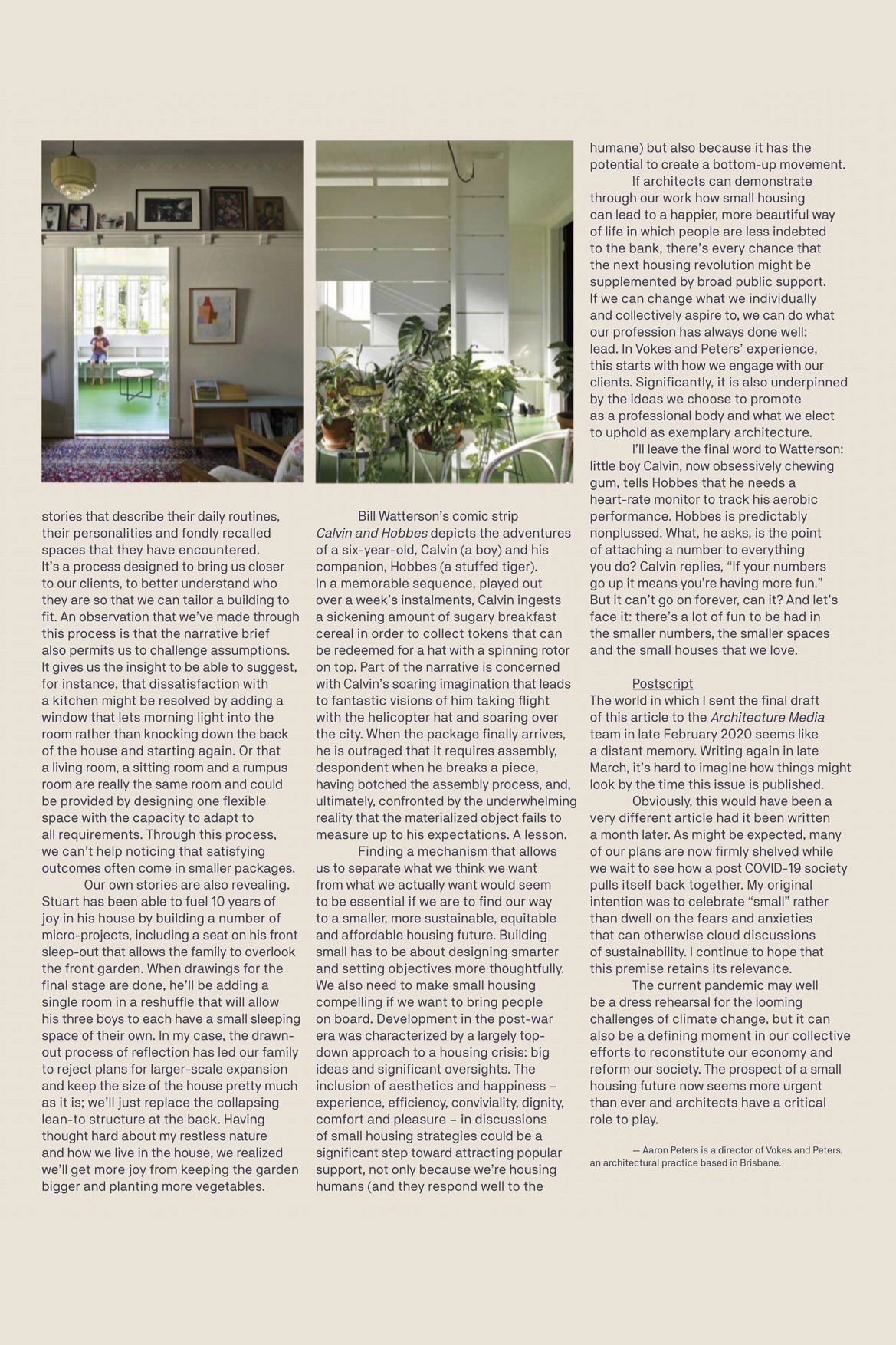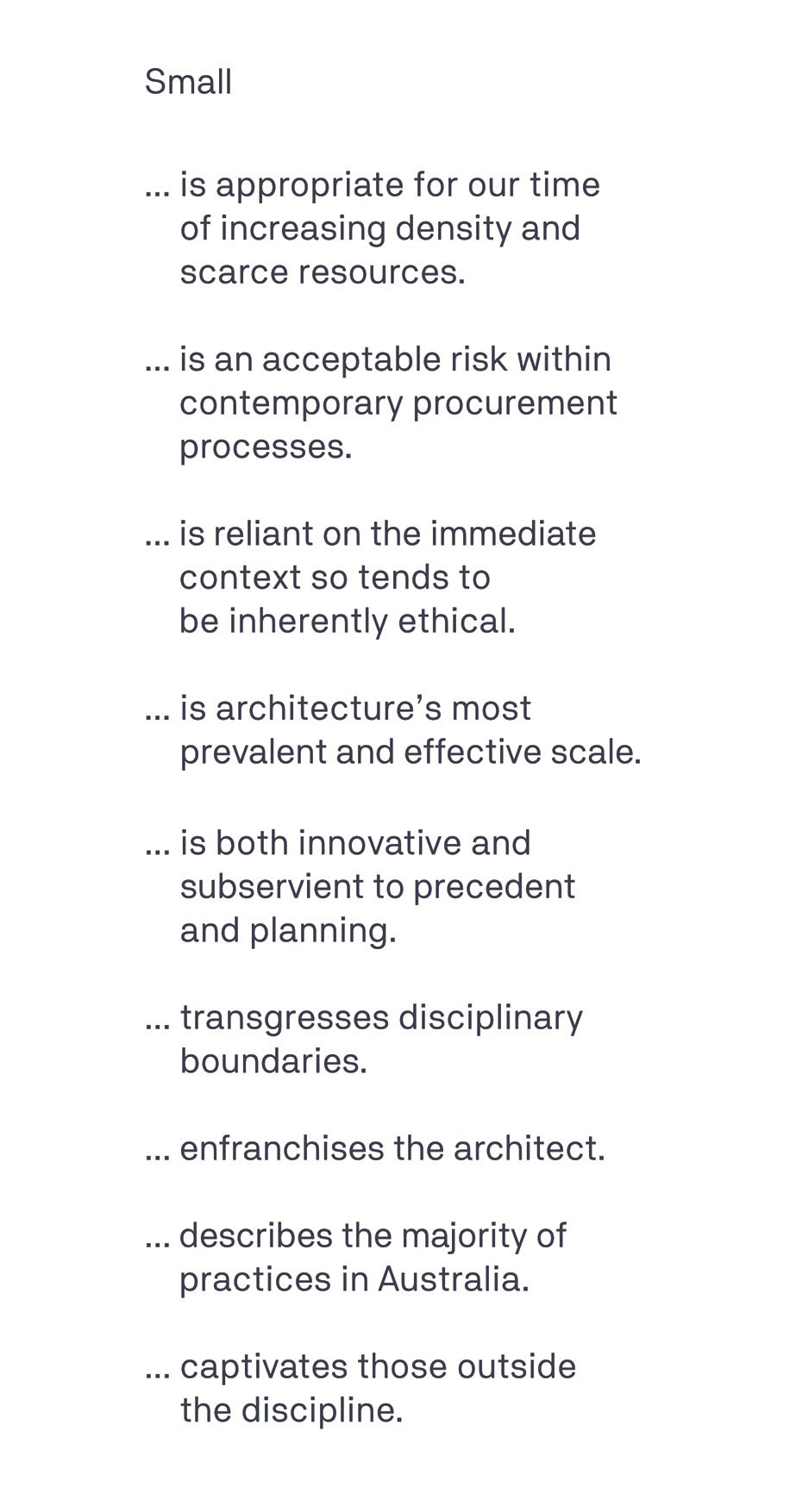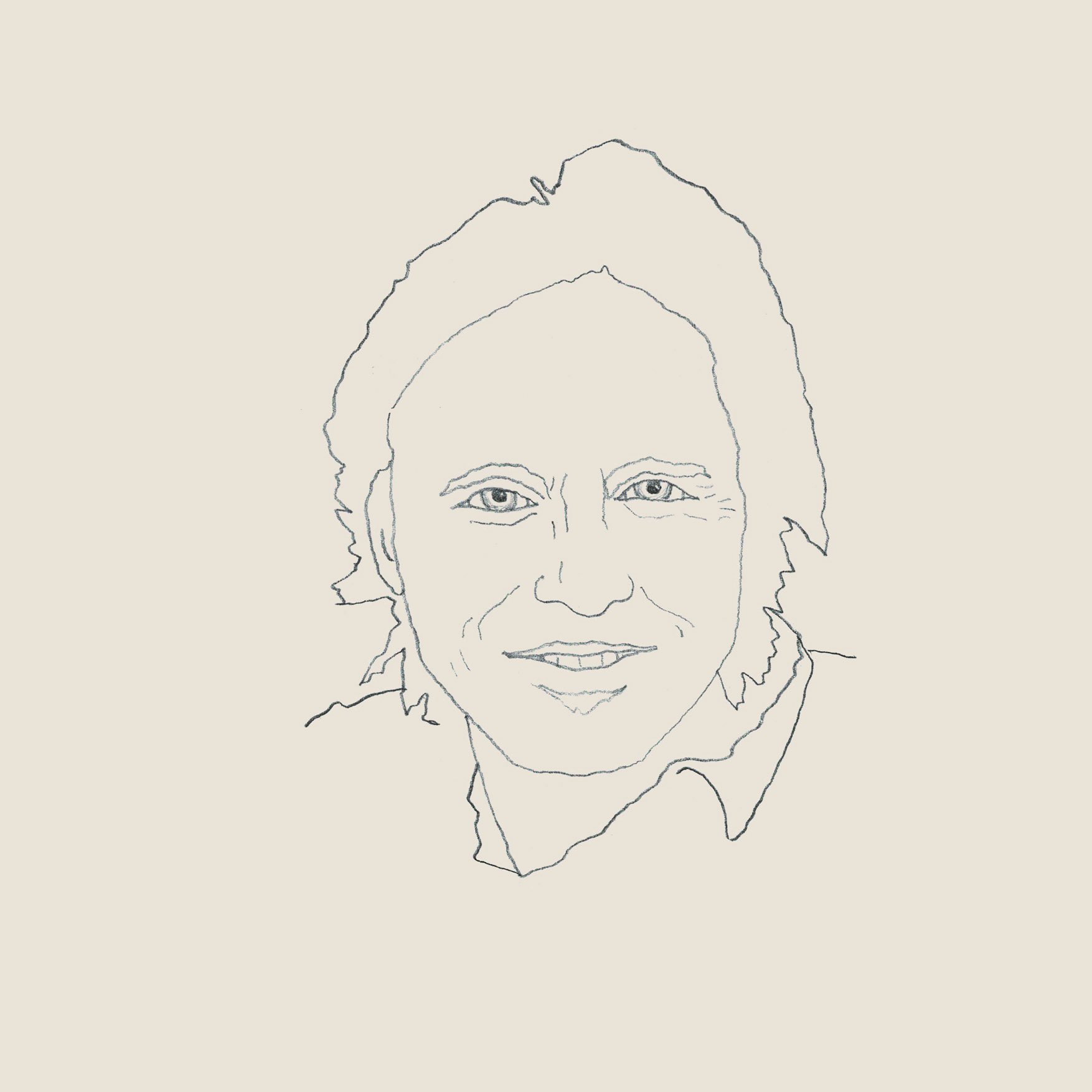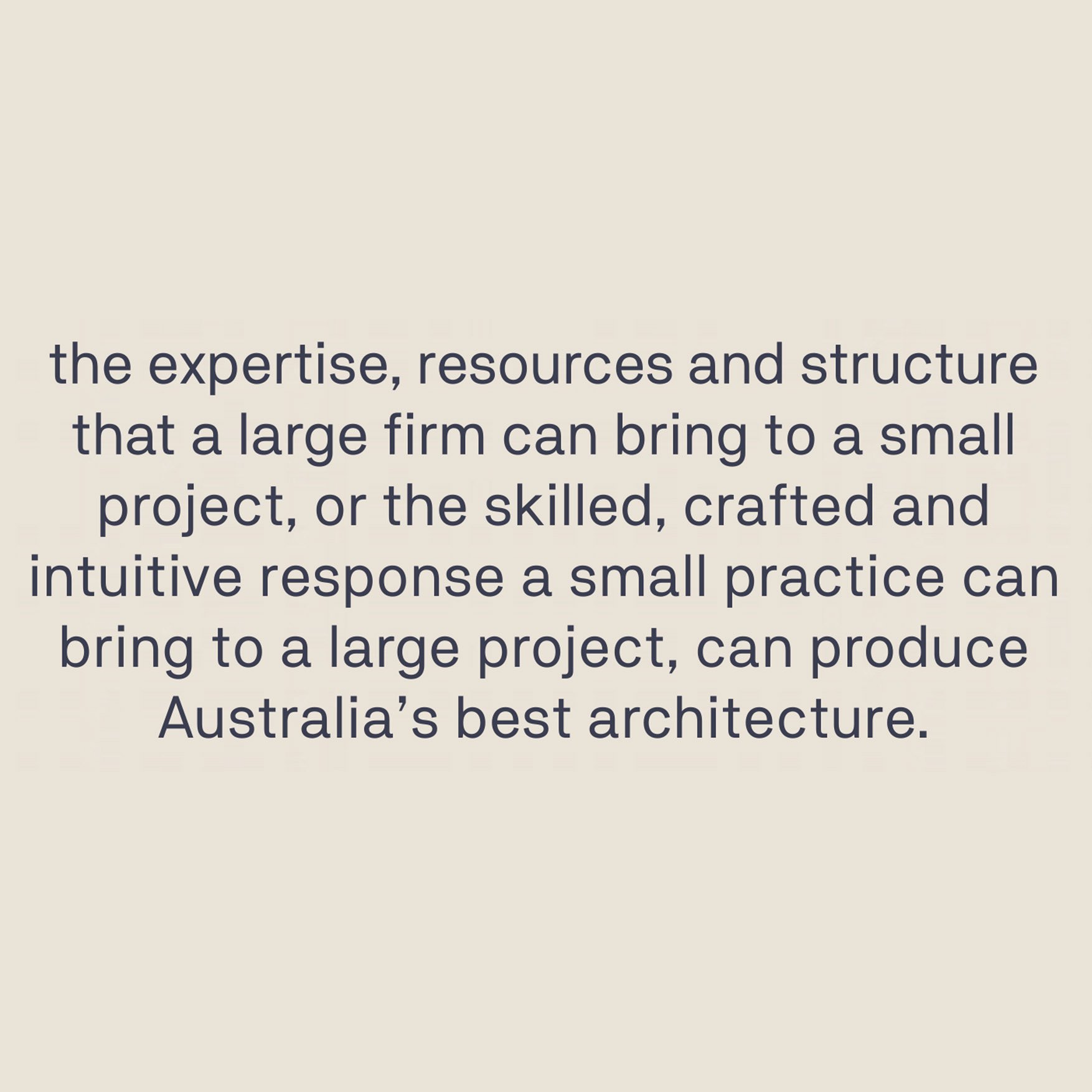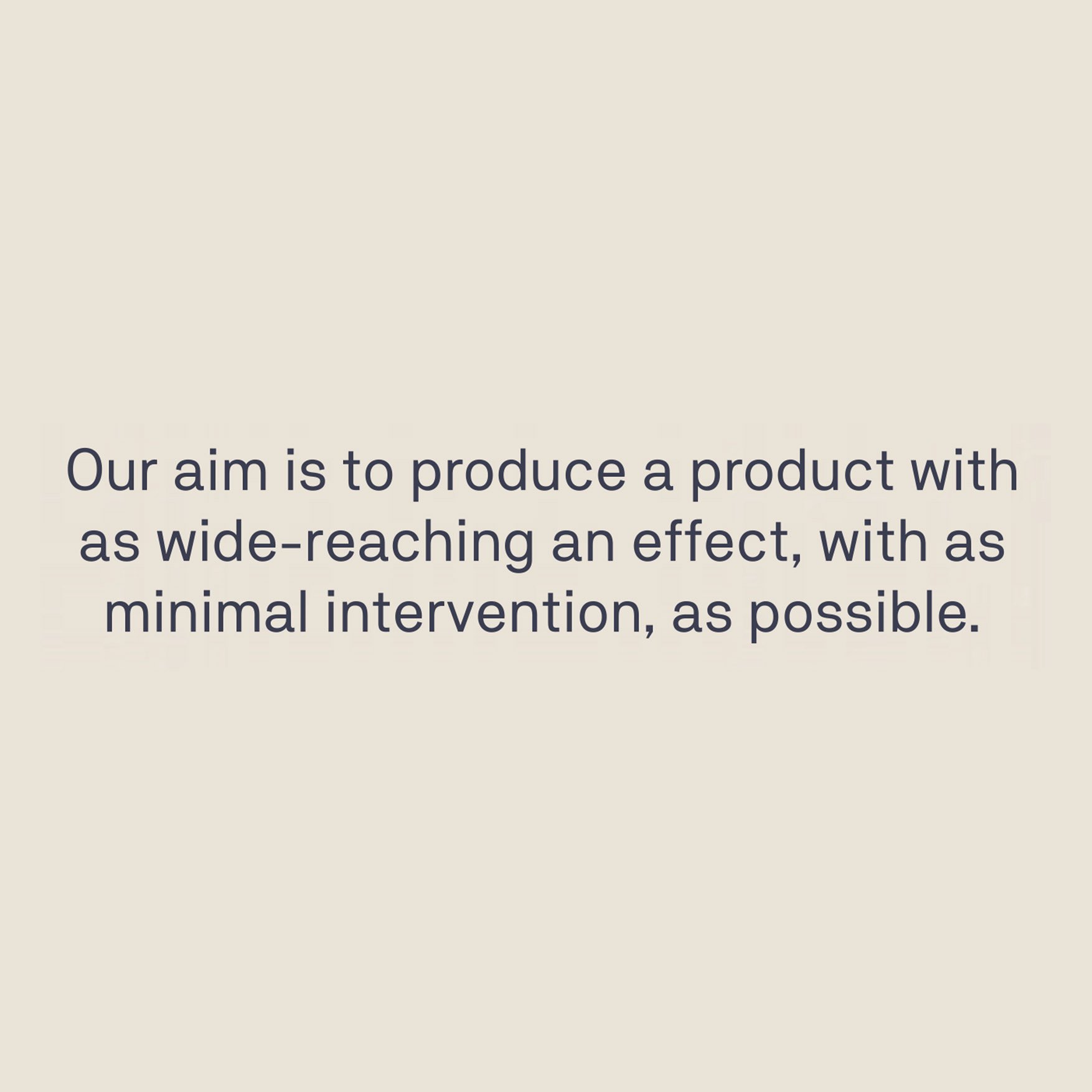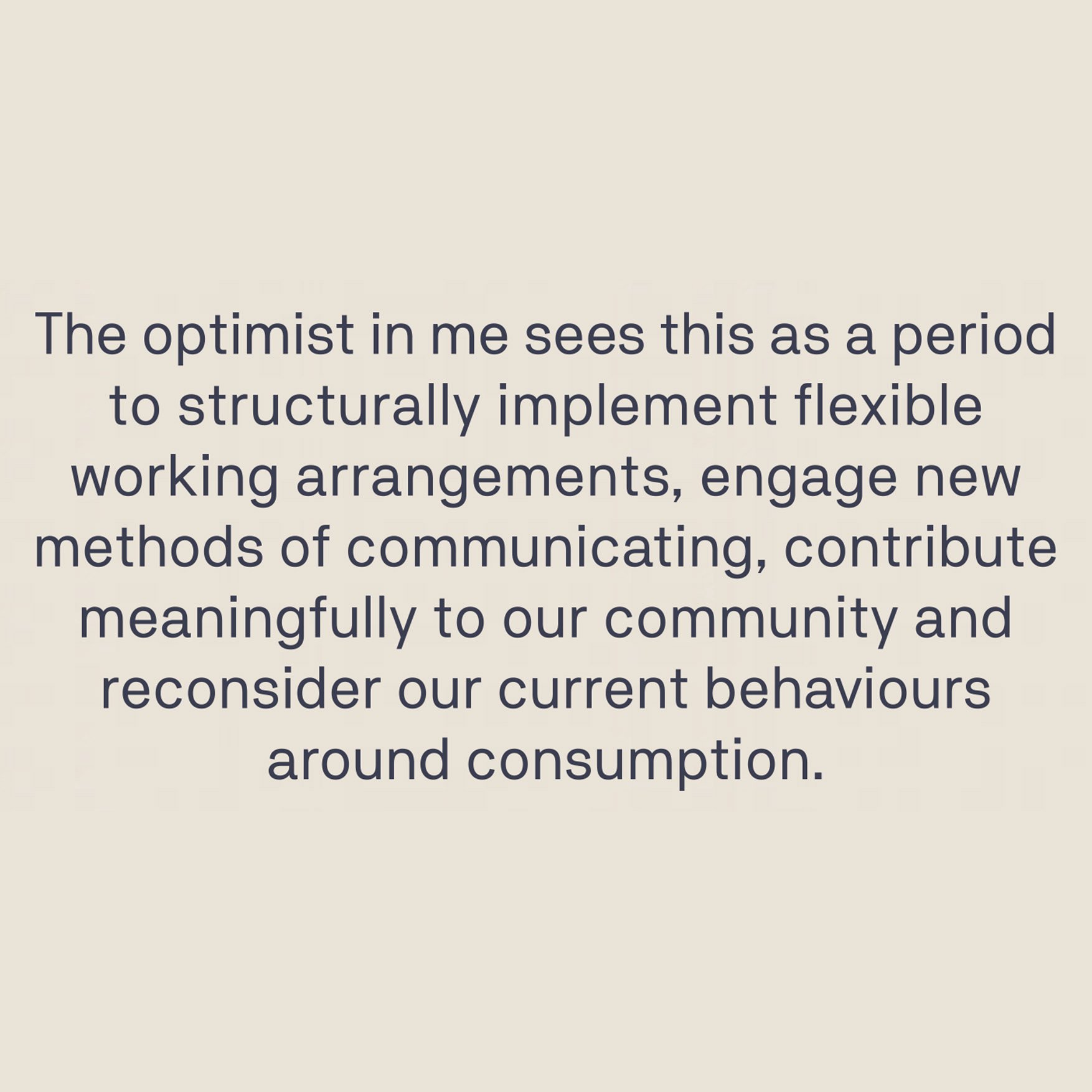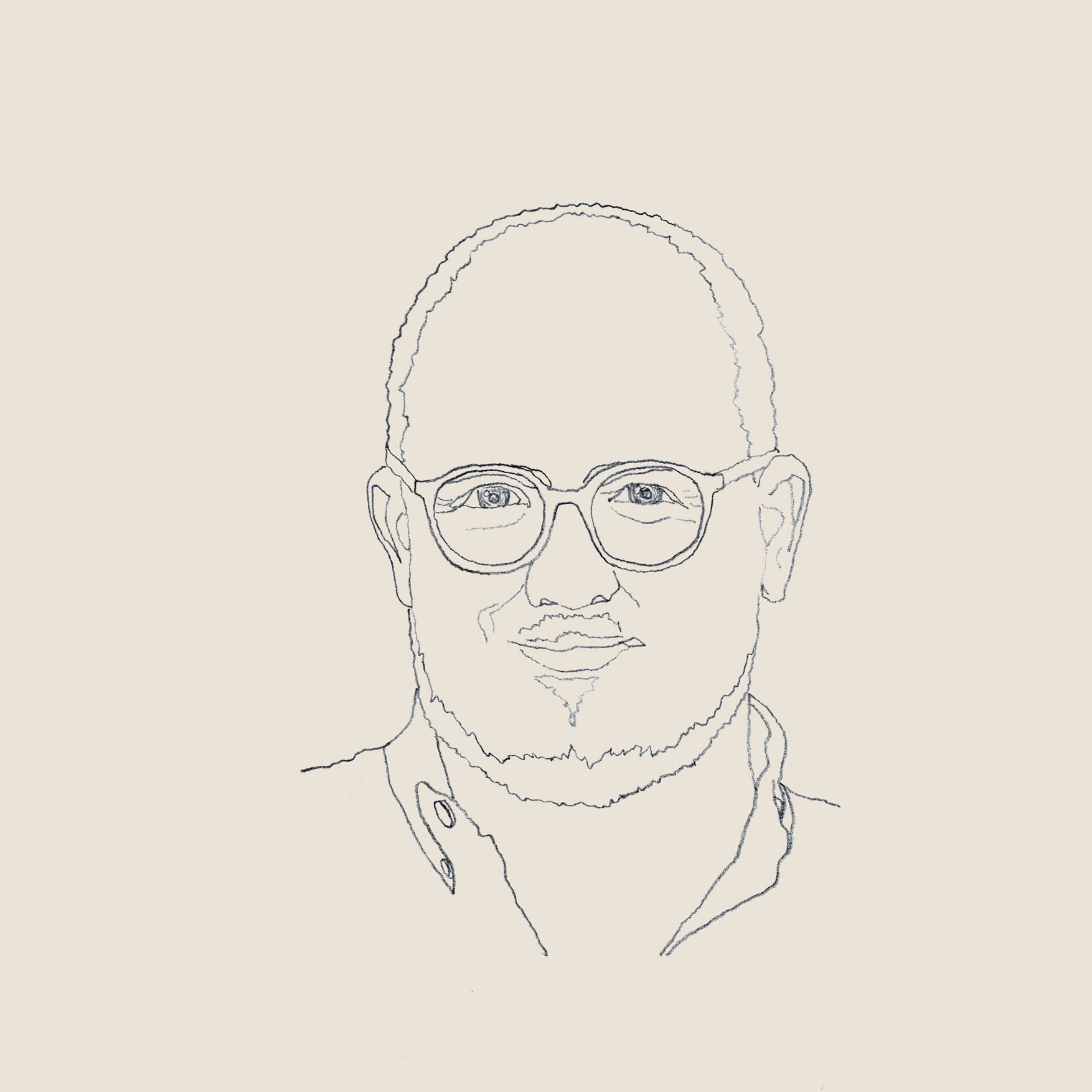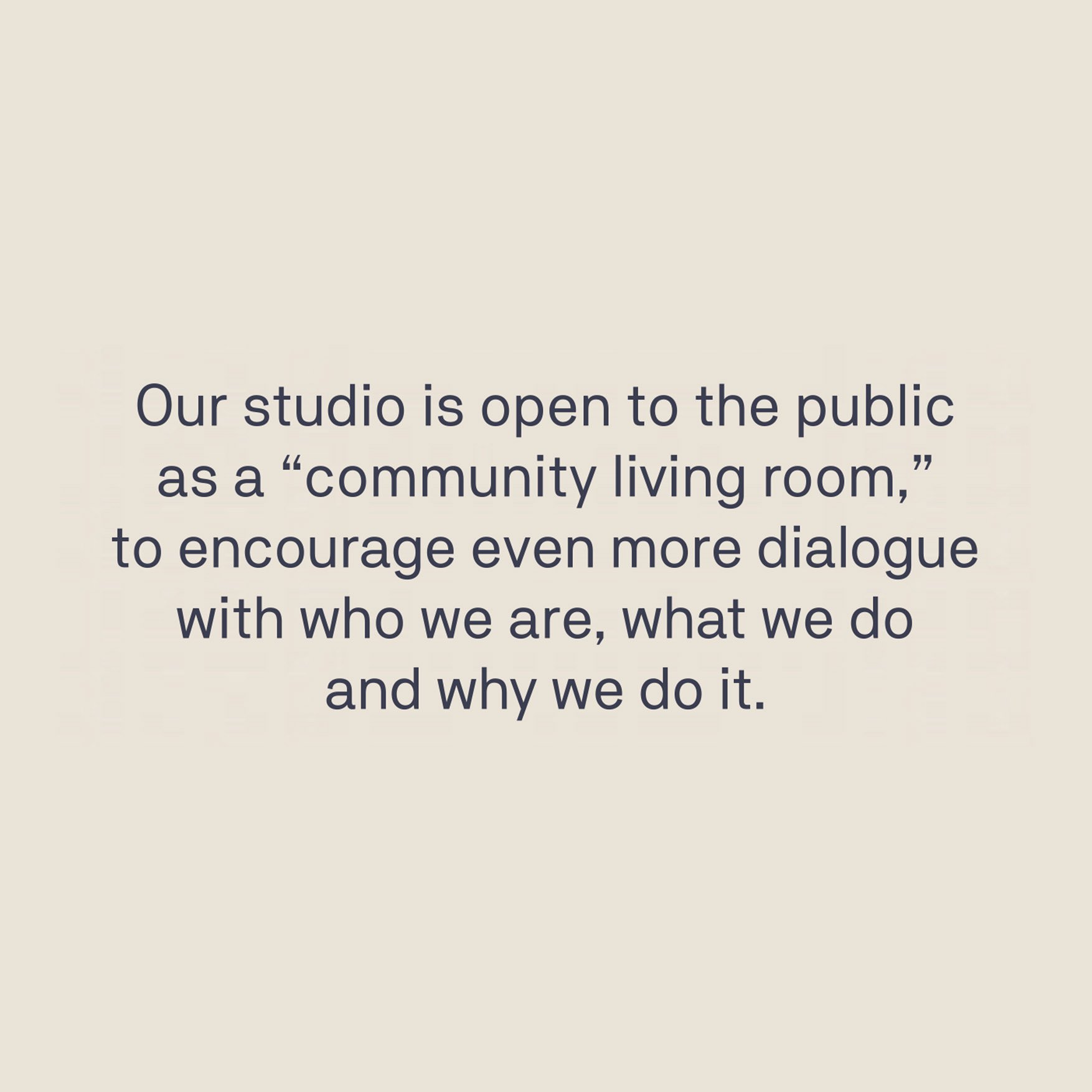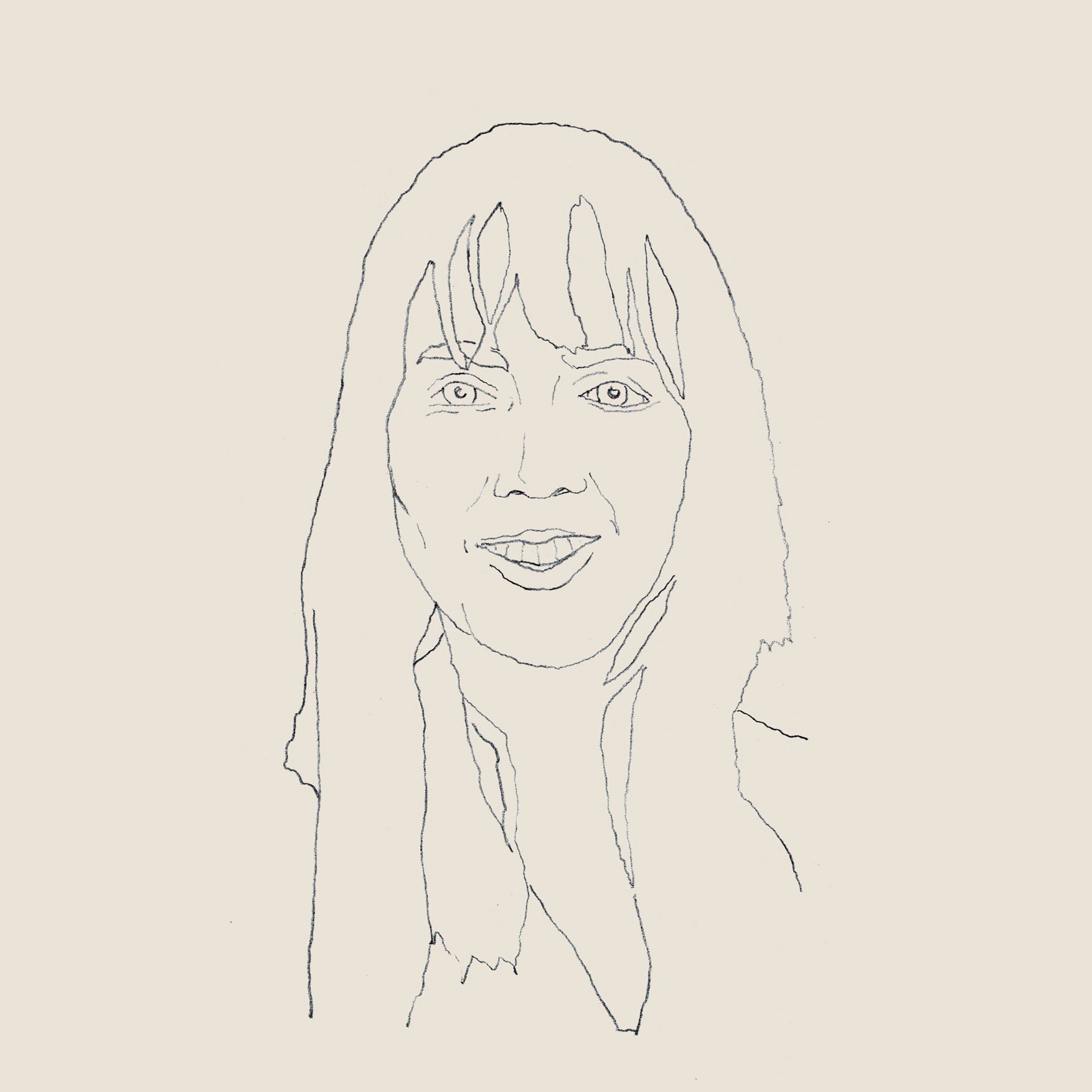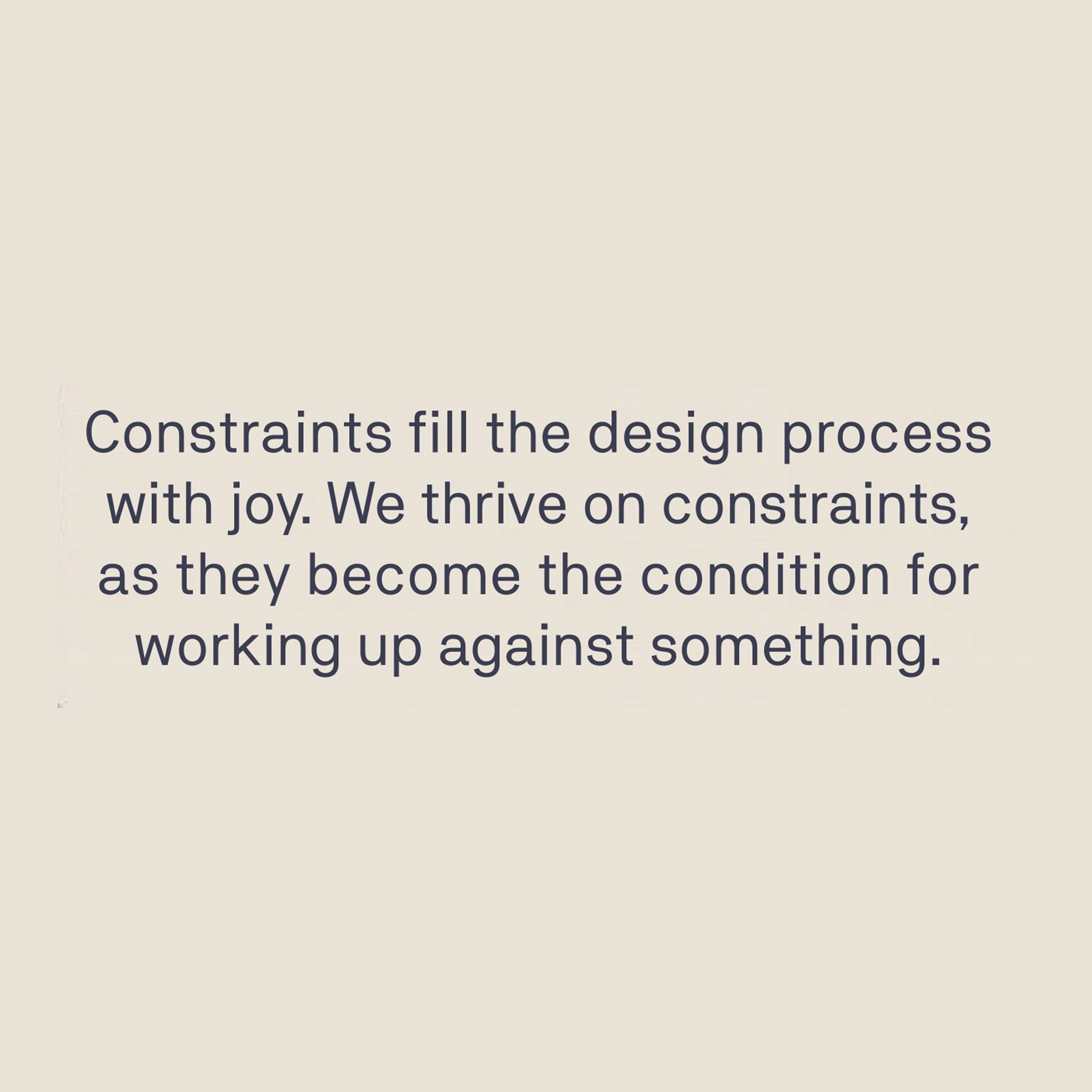Gadigal
Complete
Anita Panov & Andrew Scott
Panov—Scott was asked to guest edit a themed issue of Architecture Australia, the journal of record for the architecture profession in our country. We were delighted and thankful to engage with so many wonderful and inspiring thinkers in the course of this task. Below are a few brief extracts of our polemic:
We are interested in how, now and into the future, we might deliberately adopt limit as an armature for our collective endeavours. This would mean eschewing building big and with profligate resources, a manner that almost assures a heightened experiential impact and arresting architectural image. Instead, our aim would be to engender that impact with less. This is certainly more difficult, but what results is a form of architectural elegance, one in which small projects leverage ingenious simplicity for great impact.
Small also brings to the fore community and environmental concerns, which scale well from the small, but tend to be lost, or relegated to technologically driven amelioration techniques, in larger systems. Noam Chomsky has soberly observed that people tend to act differently in their family or community groups, as opposed to within larger cultural or economic frameworks.
In this sense, how we might enable the retention of small small-scale legibility and autonomy within a large system becomes a crucial question. The structure of the internet and other prevalent digital social systems have demonstrated the effectiveness of loosely organised networks to give order to small pieces of evolving information. This organisational framework has the potential to reposition our understanding of the architectural project in the most profound of ways.
The resultant urbanism of Small is dispersed. Dense and super-local, it would comprise a series of overlapping spatial networks centred on small-scale community-based facilities, the market, the school, the park. These networks would become polycentric to the point that density is more evenly distributed and the notion of a centre in any physical sense dissolves.
The outcome would be diverse-use neighbourhoods in which the physical needs of the community are largely satisfied by endeavours of the same community, while digital and goods delivery networks enable connection and distribution in a wider sense.
This city, as archaic as it is emergent, would establish not simply diversity but enviable resilience via the fragmentation and repetition of constituent pasts. This is inherently inefficient in a Fordist sense, but the networked redundancy in the system would enable robust evolutionary change, in both a resilient and sustainable manner.
Smallness is the crucial precondition for the success of this potential future. One which demonstrates to us that architecture may in fact find greatest social resonance at the scale of the everyday.
